We’ve simply arrived from one other journey in Fukuoka. We frequently hear different vacationers say there’s nothing to do in Fukuoka besides eat ramen. However that couldn’t be farther from the reality. On this submit, we’re debunking the parable by exhibiting not simply 10, not simply 15, however 25 points of interest, proving that Fukuoka is greater than only a ramen vacation spot.
From illuminated castles and nostalgic port cities to pottery villages and fruit farms, listed below are the finest issues to do in Fukuoka Prefecture. Which of those points of interest have you ever visited earlier than? Or in the event you haven’t been to Fukuoka but, that are you most trying ahead to expertise. Tell us within the feedback part under!
WAIT, WAIT, WAIT! In case your are touring quickly and nonetheless on the starting stage, you may as well go to our The Poor Traveler Masterlist. Right here, we compiled journey necessities, together with immigration necessities and all our really helpful motels and excursions. Simply go to this web page: TPT Masterlist. We’ve a compilation for locations around the globe.
1. Yanagawa River Cruise

Yanagawa, additionally known as the town of water, is an previous fort city, situated 50 minutes away from Hakata Station. It’s surrounded by canals (moats) that turned one of many essential vacationer points of interest the place guests get pleasure from a scenic boat experience down the canals. Autumn and spring are one of the best instances to go to for the autumn colours and the cherry blossoms. It’s also possible to hire and put on conventional kimono whereas exploring! You possibly can e-book a tour with the native journey businesses on the location or on-line.
✅ CHECK RATES or RESERVE A KIMONO HERE
2. Historic Hakata Tour
Hakata, as soon as a significant port metropolis and buying and selling hub, is likely one of the oldest cities in Japan. Within the early 1800s, it was once a separate metropolis from Fukuoka, however the two cities ultimately turned one in 1889. 4 previous city districts in Hakata are Gokusho, Reisen, Naraya, and Ohama. You are able to do a D-I-Y or e-book a guided tour. In the event you select to e-book a tour, a few of the traditional stops are Jotenji, Tochoji, and Xie Guoming’s historic tomb.
3. teamLab Forest Fukuoka
Tucked contained in the glossy BOSS E・ZO FUKUOKA advanced, you’ll discover teamLab Forest Fukuoka. Like most teamLab websites, it’s an interactive, extremely Insta-worthy museum. The second we stepped in, we felt we had teleported to a different dimension dominated by a kaleidoscope of colours and shapes. Each nook reacts to your contact, footsteps, and gestures, making you’re feeling like a part of the paintings itself. It’s additionally divided into numerous zones.

However what units this Fukuoka department other than the others is its Catch and Gather Forest. Right here, you chase glowing digital animals or look forward to them to look within the shifting landscapes, establish and “acquire” them utilizing the app, then launch them again to the wild.
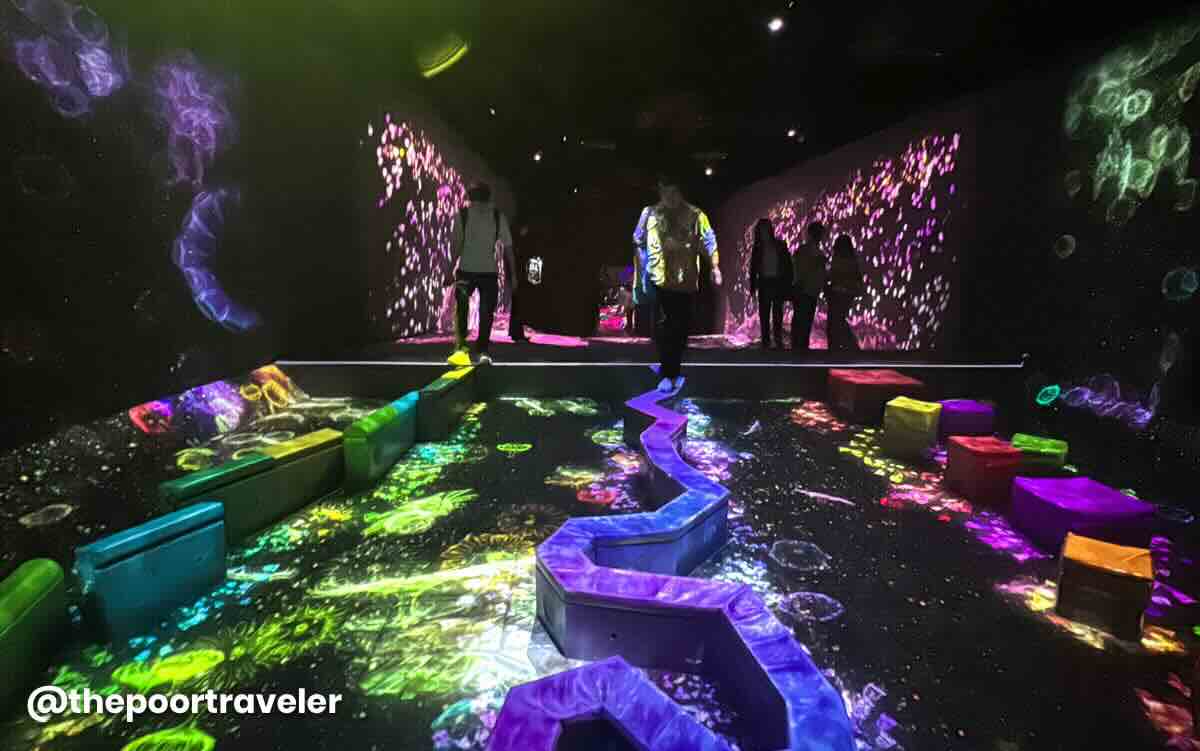
It additionally has the Athletics Forest, which challenges your stability and agility on luminous flooring and interactive slopes.
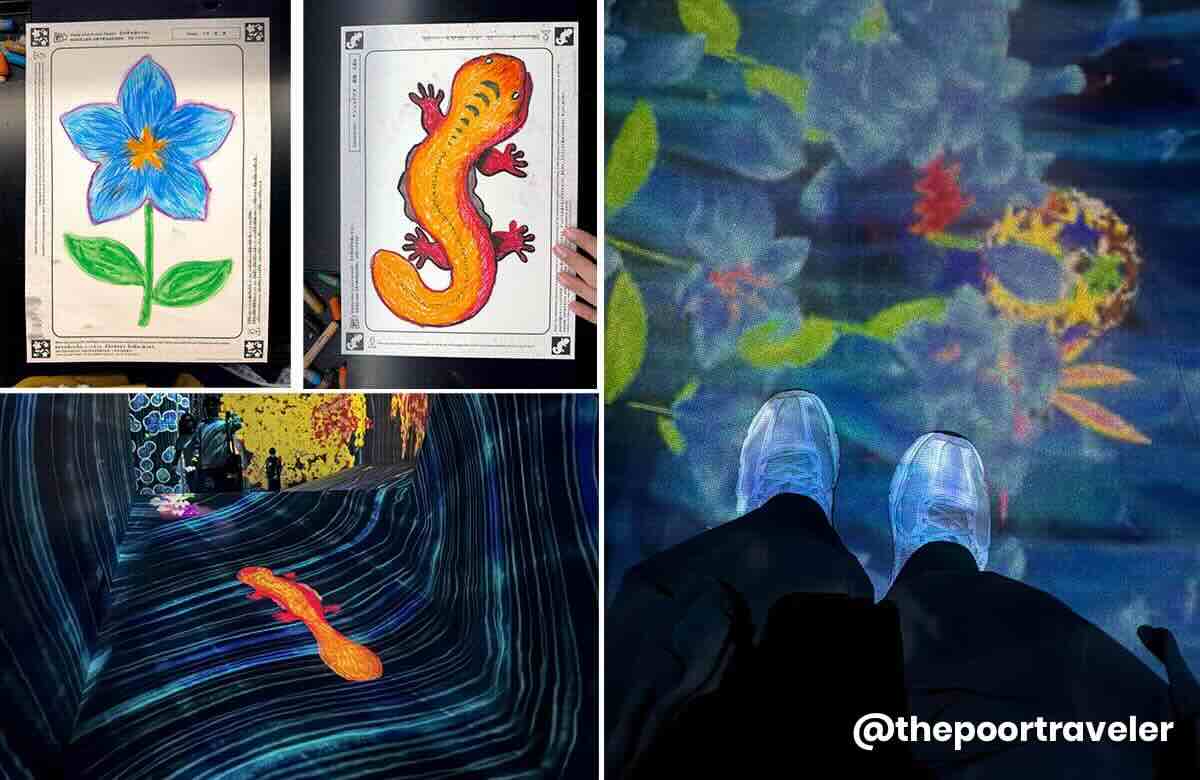
However our favourite factor to do at any teamLab website is drawing our personal plant or animal on paper, scanning it, and watching it come to life and bounce across the room, which seems extra like a colourful dream than a workshop. teamLab Forest at all times succeeds in reconnecting me with my sense of surprise or that feeling of awe that we lose someplace between deadlines and day by day routines.
Tackle: teamLab Forest Fukuoka, 5F BOSS E・ZO FUKUOKA, 2 Chome−2−6, Jigyohama, Chuo Ward, Fukuoka Metropolis, Fukuoka, Japan
Working Hours: Monday to Friday, 11:00 AM – 07:00 PM; Saturday to Sunday, 10:00 AM – 07:00 PM
Entrance Payment: JPY 2400
How you can Get to teamLab Forest Fukuoka: From the primary flooring of Hakata Bus Terminal, board Bus 306 to Kyushu Iryo Middle (Hospital) bus cease. Then stroll for about 5 minutes.
4. Kushida Shrine
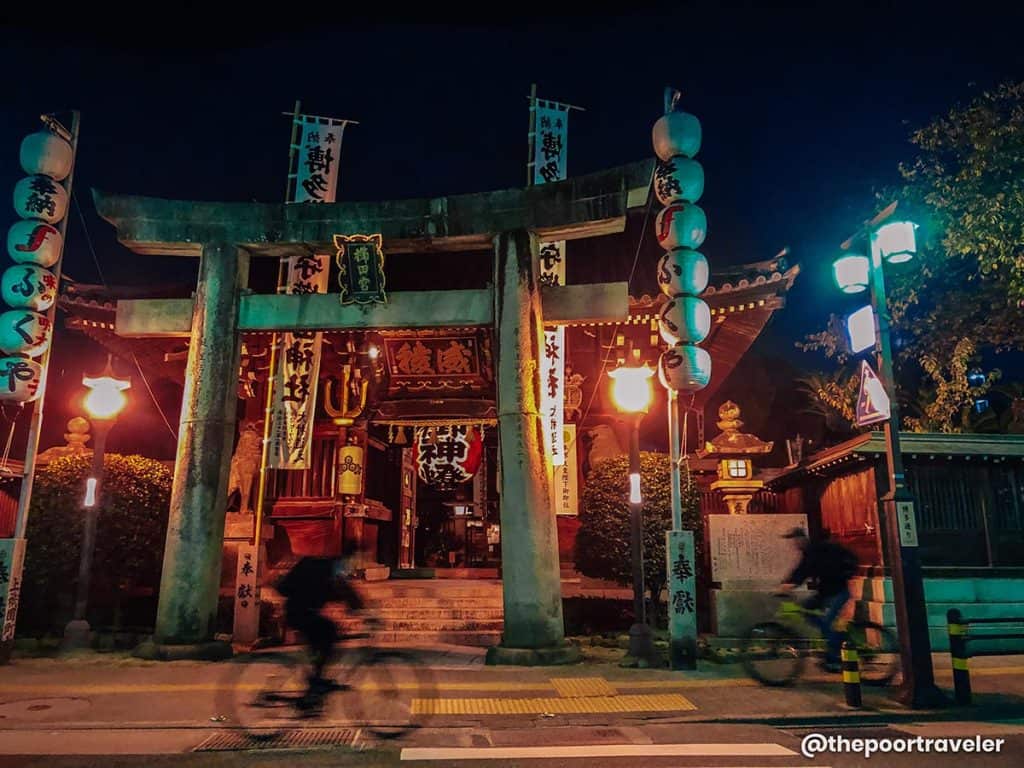
Kushida Shrine is likely one of the oldest in Fukuoka, relationship again to 757 when Hakata had its golden days as a port metropolis, serving retailers and diplomats. Considered crucial shrine in Fukuoka, this Shinto shrine is fondly known as by the locals “okushida-san”. It homes a fountain of longevity and Chikara Ishi.
The shrine can be the guts of Hakata Gion Yamakasa Pageant, the largest pageant in Fukuoka which is widely known from early to mid July.
Location: Kushida Shrine, 1-41, Kamikawabata-machi, Hakata Ward, Fukuoka Metropolis, Fukuoka, Japan
Opening Hours: Every day, 4:00 AM – 10:00 PM
Nearest Station: Eight minutes on foot from both Nakasu-Kawabata Station or Gion Station on the subway.
5. Ohori Park
Ohori Park gives a inexperienced, peaceable escape in the midst of the metropolis. The park was initially a part of the moat of Fukuoka Citadel and now options a big pond surrounded by strolling paths, bridges, and comfy cafés. Locals jog, picnic, or simply chill right here with espresso in hand whereas geese glide throughout the water.
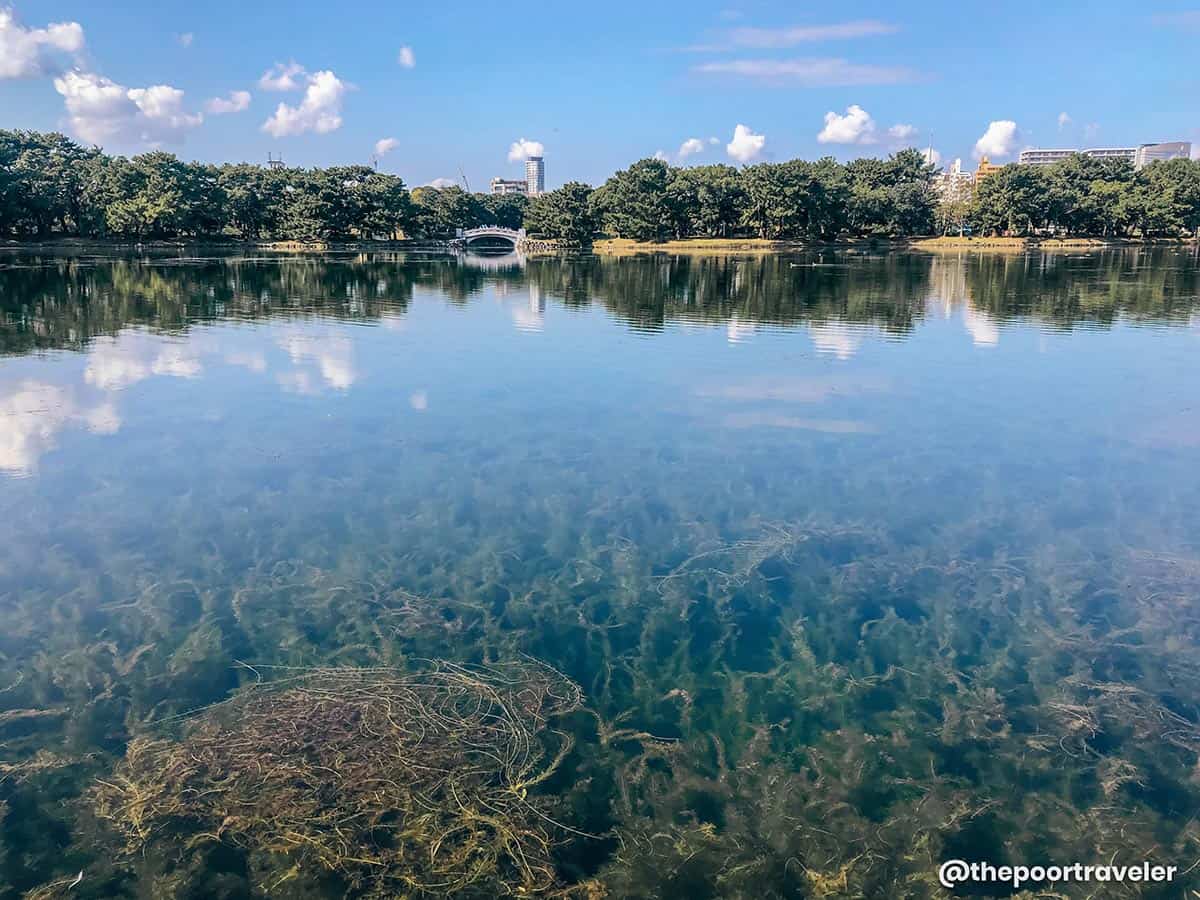
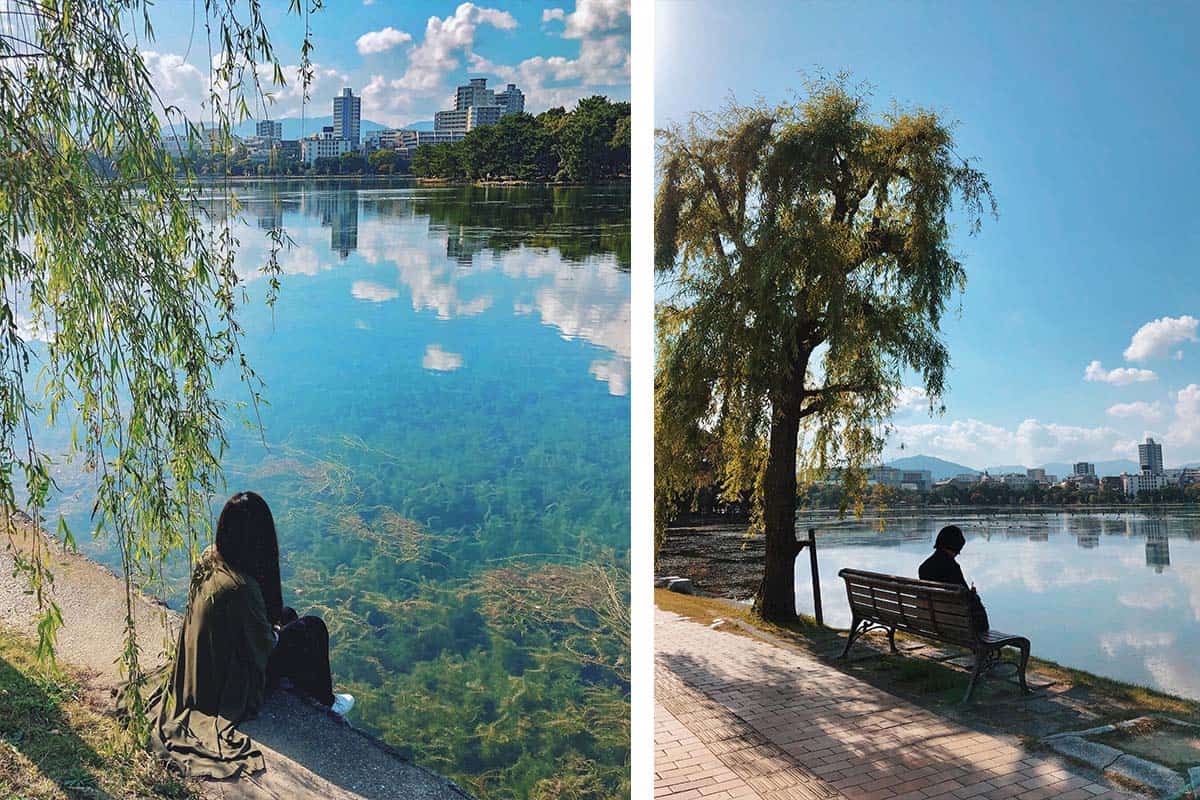
You’ll additionally discover the Fukuoka Artwork Museum and the Fukuoka Citadel Ruins close by. The ruins themselves are largely stone foundations now. However whether or not you’re up for a jog, a date, or simply some quiet reflection, Ohori Park is a slice of calm within the coronary heart of the town.
Tackle: Ohori Park, Chuo Ward, Fukuoka Metropolis, Fukuoka, Japan
How you can Get to Ohori Park: From Hakata Station, take the Airport Line to Ohori Park (Fukuoka Artwork Museum).
6. Kokura Citadel
If you wish to see a Japanese fort in Fukuoka, journey to the town of Kitakyushu’s Kokura district. Kokura Citadel is likely one of the most hanging historic landmarks in northern Kyushu. Initially in-built 1602 by Hosokawa Tadaoki, a samurai lord underneath Toyotomi Hideyoshi, the fort served as a strategic stronghold between Honshu and Kyushu.
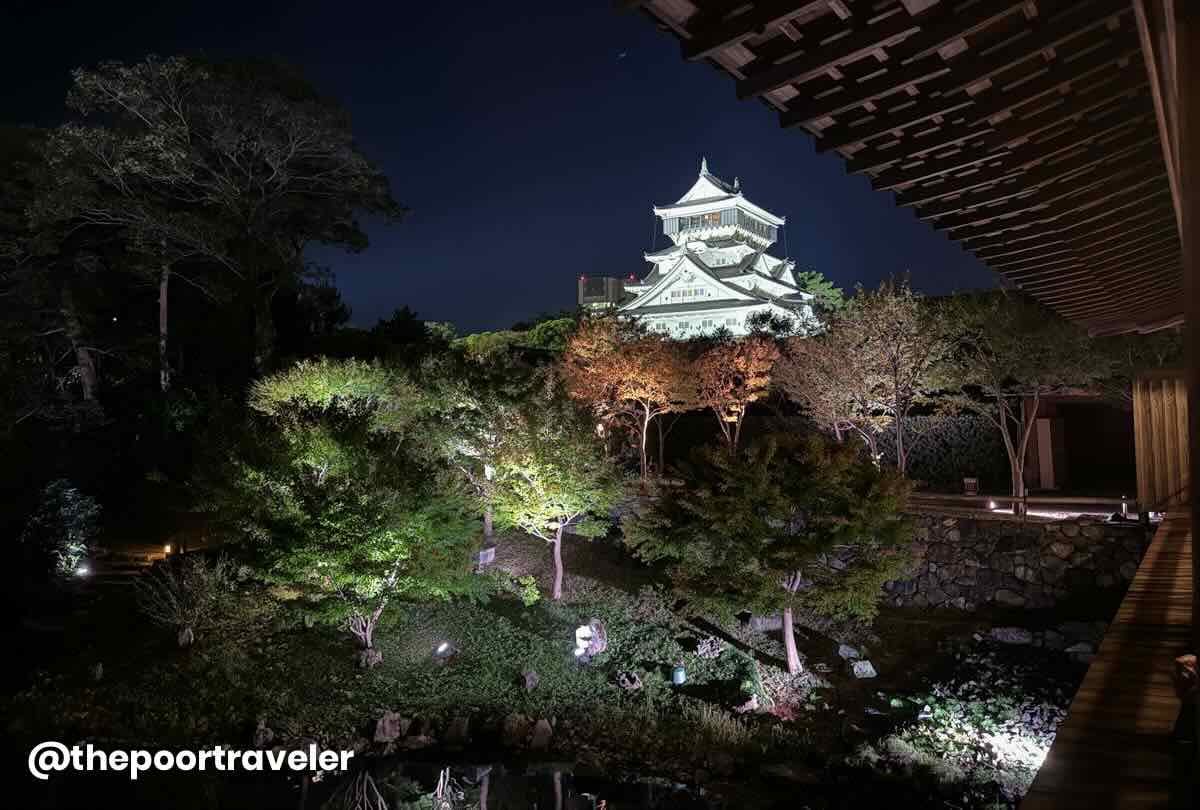
Like many Japanese castles, it was destroyed and rebuilt a number of instances over the centuries, with the present construction being a 1959 reconstruction. Regardless of that, it fantastically retains its feudal-era attraction with its layered roofs, white plaster partitions, and sweeping views over the town of Kitakyushu.
It’s a terrific spot to go to any time of the 12 months, nevertheless it’s particularly spectacular from late October to early November, when the fort grounds are illuminated by numerous bamboo lanterns. The Kokura Citadel Bamboo Lantern Pageant creates an environment that’s so tranquil that it virtually seems like strolling by a fairytale. It was magical, and undoubtedly not one thing you count on from a metropolis most vacationers overlook.

After exploring the fort, we stayed for the sunshine present within the fort backyard. The efficiency mixed conventional Japanese aesthetics with lasers and different lights. Between the music and the cool night breeze, it was a mesmerizing expertise that proved Kitakyushu’s mix of previous and new could be extremely enchanting.
Tackle: Kokura Citadel, 2-1 Jonai, Kokurakita-ku, Kitakyushu Metropolis, Fukuoka, Japan
Citadel Tower Working Hours: April to October: 9:00 AM – 8:00 PM; November to March: 9:00 AM – 7:00 PM
Nearest Station: Kokura Station and Nishi-Kokura Station
7. Tanga Market

If you’d like a style of native life in Kitakyushu, head to Tanga Market, a 100-year-old meals market that has been serving locals because the Taisho period. It began as a small riverside buying and selling space and advanced right into a bustling maze of over 120 stalls and eateries. Even after a devastating hearth in 2022, the market continues to thrive, with many distributors rebuilding their outlets.
We wandered by the aisles crammed with the scent of marinated fish and simmering oden. We have been instructed that locals used to have the ability to purchase rice at one stall and toppings from others, making a DIY donburi expertise and an interactive solution to eat. However the rice stall was not open on the time.

Stretching adjoining to the market is Uomachi Gintengai, one of many oldest lined procuring arcades in Japan and extensively believed to be the primary to ever use the time period “ginten-gai”, which roughly interprets to “silver-covered avenue.” It dates all the best way again to the postwar interval, when locals rebuilt their companies underneath a protracted roof to guard consumers from the rain.
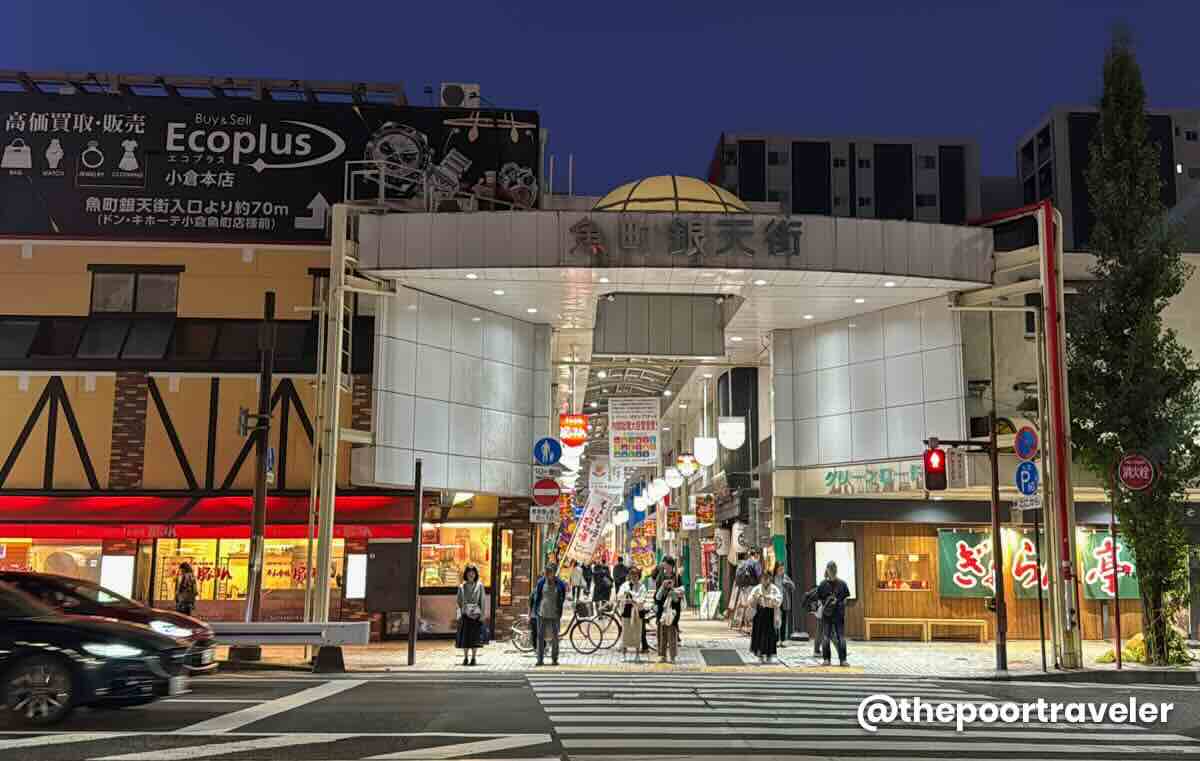
Immediately, it stays the beating coronary heart of downtown Kitakyushu, stretching for a number of blocks filled with outlets, cafés, and eating places. We had dinner at one of many izakayas right here, and we’ll characteristic it in our subsequent submit showcasing Fukuoka’s meals spots.
Tackle: Tanga Market, 4-2-18 Uomachi (魚町) / 4-2-8 Uomachi, Kokurakita Ward, Kitakyushu Metropolis, Fukuoka, Japan
Working Hours: They differ by retailer, however the typical opening is 10:00 AM to 17:00/18:00. Closed or various retailer hours on some days.
Nearest Station: Kokura Station
8. Mojiko Retro
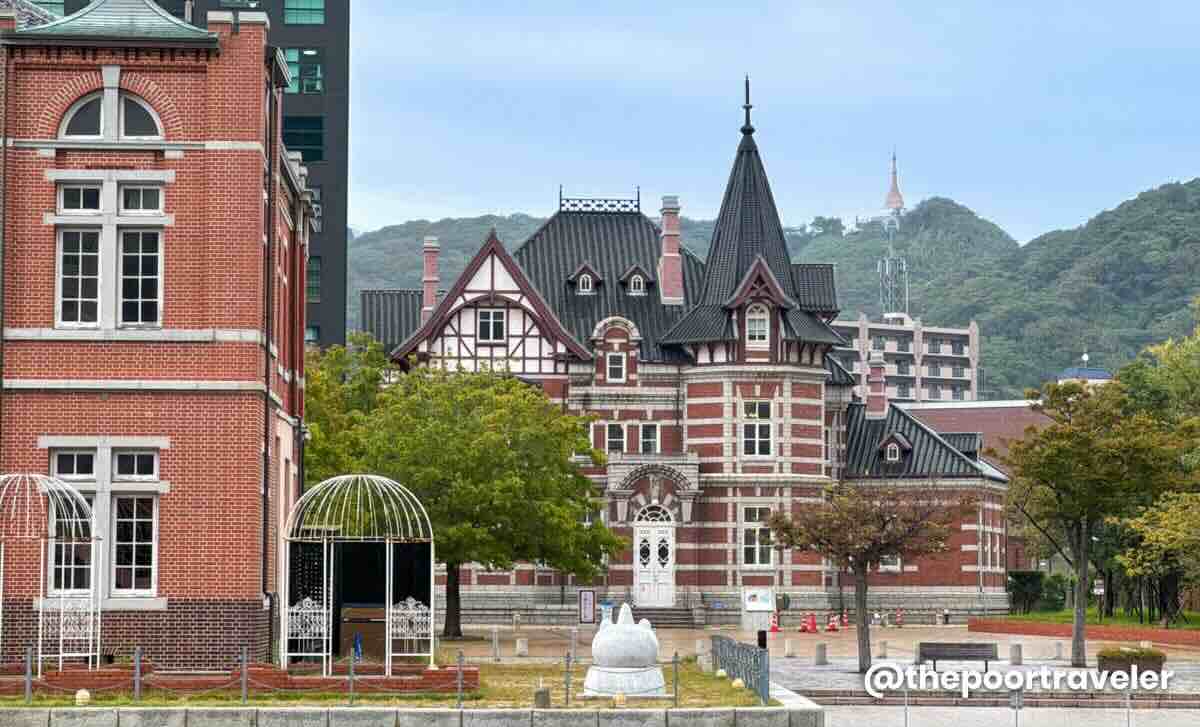
Additionally situated in Kitakyushu, however fostering a really completely different ambiance is Mojiko Retro. As quickly as we arrived, it felt like we have been transported right into a steampunk model of Europe. Jogged my memory a little bit of Fullmetal Alchemist, however seaside. This historic port space thrived within the early 1900s when Moji served as one in all Japan’s main worldwide buying and selling hubs. Immediately, the fantastically restored Western-style buildings and retro lampposts create a captivating time-slip expertise.

We started our stroll at Mojiko Station, one in all Japan’s oldest practice stations, reopened in 2019 after years of restoration. Its wood interiors and classic signage made us really feel like time vacationers. From there, we noticed the Former Moji Mitsui Membership, the place Albert Einstein stayed when he visited Japan.
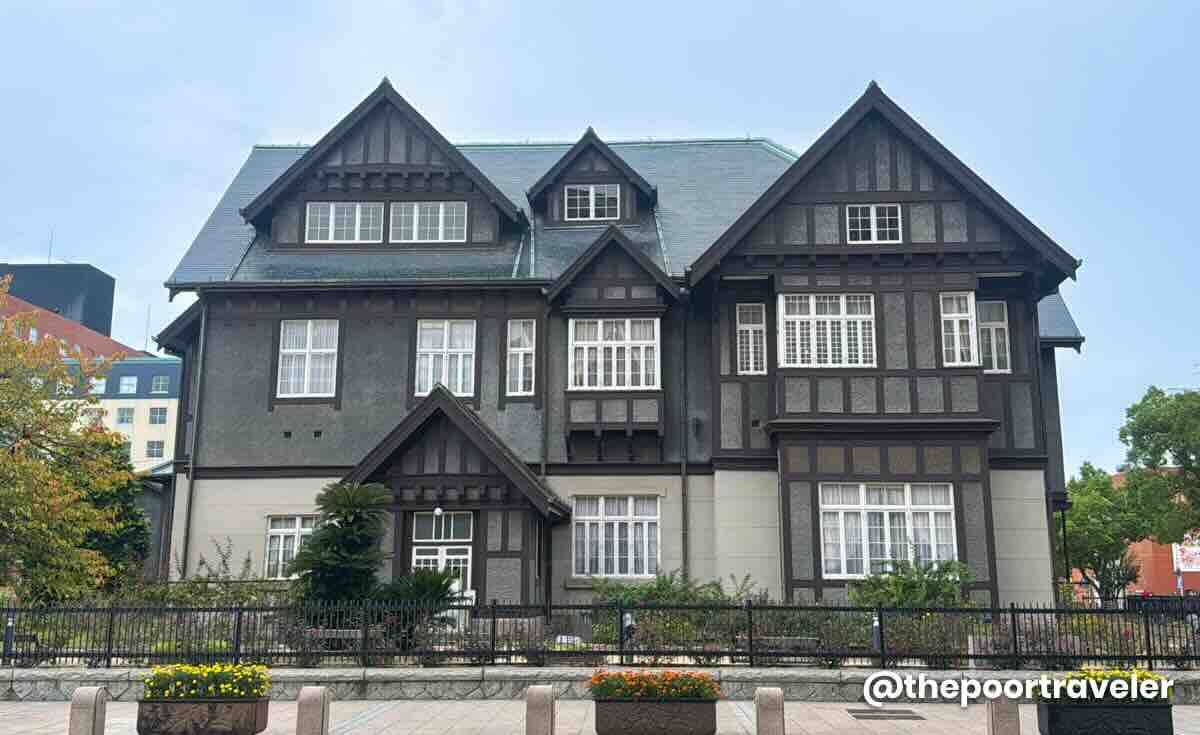
We then walked by the Flea and Vintage Market, the place all kinds of merchandise are offered, from kitchenware to equipment to motion figures!
After which we reached Blue Wing Moji, and it’s truly Japan’s largest drawbridge for pedestrians. However what actually makes it particular is its romantic popularity. Locals name it the Lovers Bridge due to a captivating legend: if a pair crosses it collectively, their love will final ceaselessly.
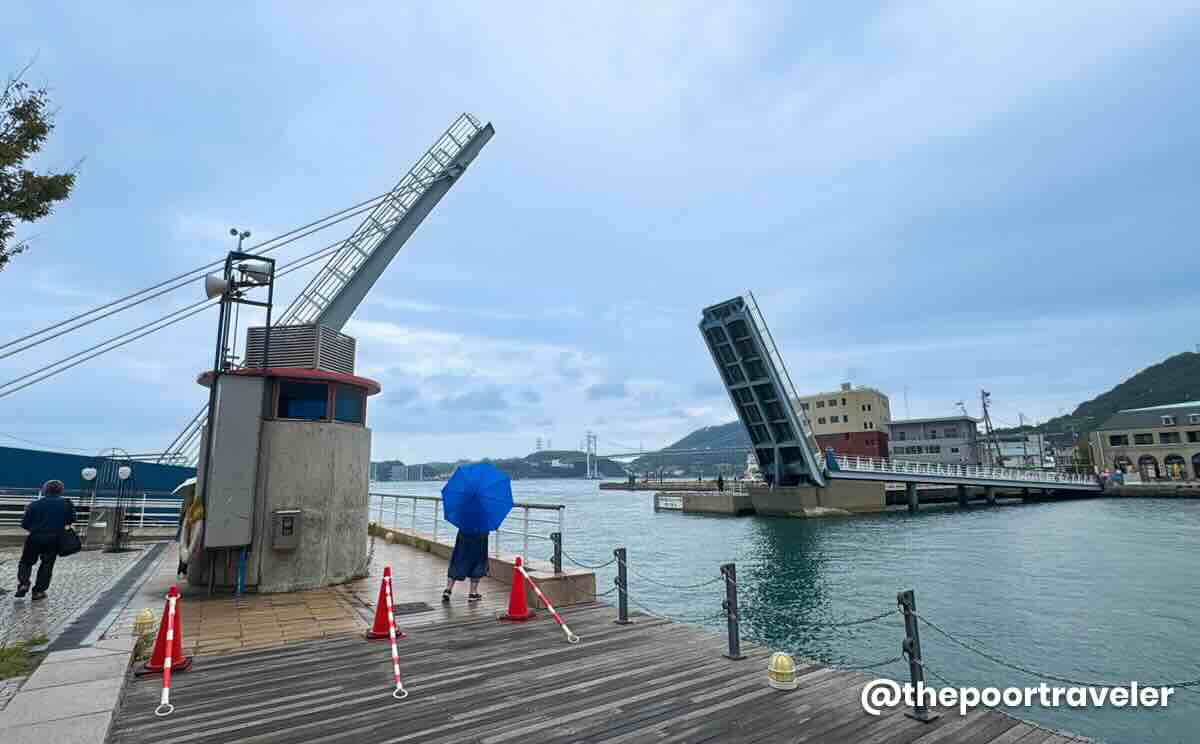
After witnessing the opening and shutting of the bridge, we strolled alongside the waterfront, admiring landmarks just like the Previous Moji Customs Constructing and Kaikyo Plaza, which homes outlets, cafés, and the area’s well-known “banana-themed” treats.

Sure, you learn that proper: bananas! Mojiko is obsessive about them! You’ll discover banana desserts, banana beer, and banana souvenirs throughout city. You possibly can have a selfie with this life-size banana-man statue. And a tiny banana fortune teller may even ship a glimpse of what the longer term holds for you. It’s bizarre, it’s enjoyable, it’s bananas!
However why are they going bananas over bananas? It’s historical past. Through the port’s heyday, it turned the principle entry level for imported bananas, resulting in the native “Banana no Tatakiuri” custom, whereby distributors theatrically shouting and slicing banana bunches for patrons.
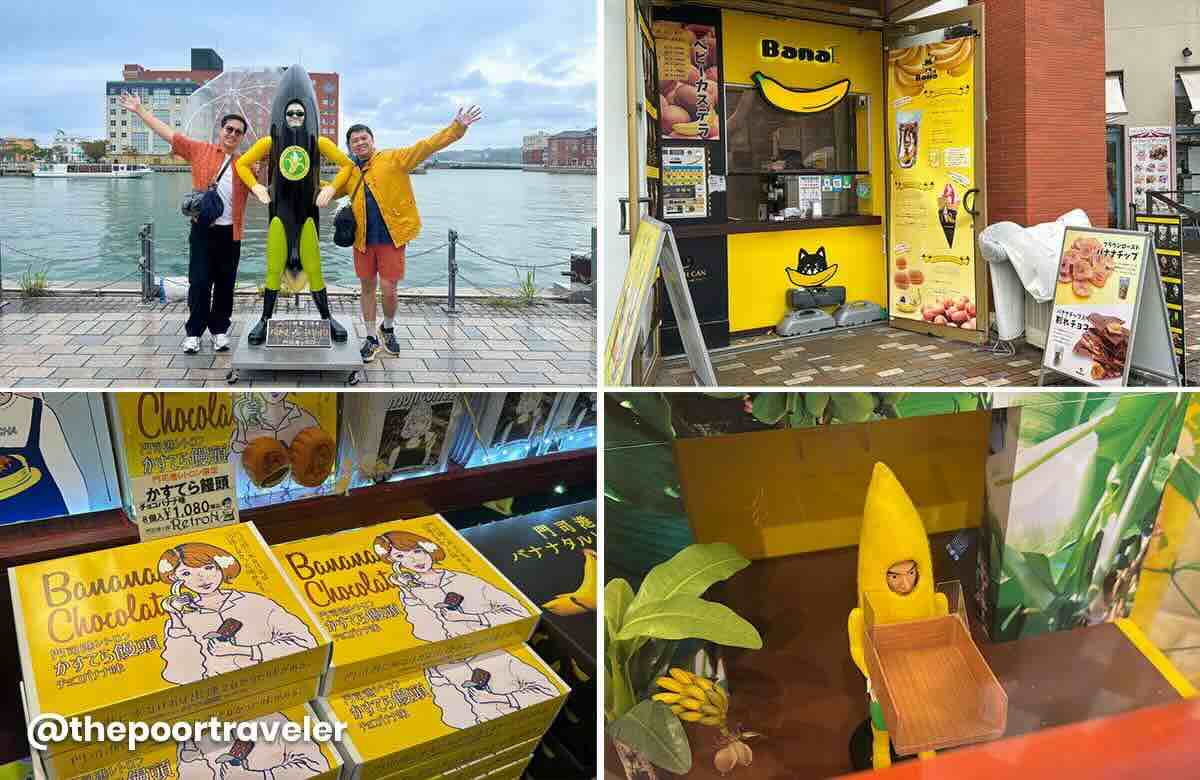
And it’s finest symbolized by the marker, which learn “the birthplace of bargain-priced banana gross sales”. Fairly unassuming, however it is a Japanese Heritage Web site. Apparently, this was the spot the place the Japanese collect in large crowds to buy bananas imported from different nations, and most of them got here from – you guessed it — the Philippines!
There’s your Mojiko-Philippine connection for you. And it’s bananas!
Tackle: Mojiko Retro, Minatomachi, Moji Ward, Kitakyushu Metropolis, Fukuoka, Japan
Opening Hours: The port advanced is open 24/7. As for the vacationer spots throughout the port, the opening schedule varies, however the traditional is from 9:00 AM to five:00 PM. In the meantime, the Mojiko Retro Commentary Room is open from 10:00 AM to 10:00 PM.
Nearest Station: Mojiko Station
9. Miyajidake Shrine
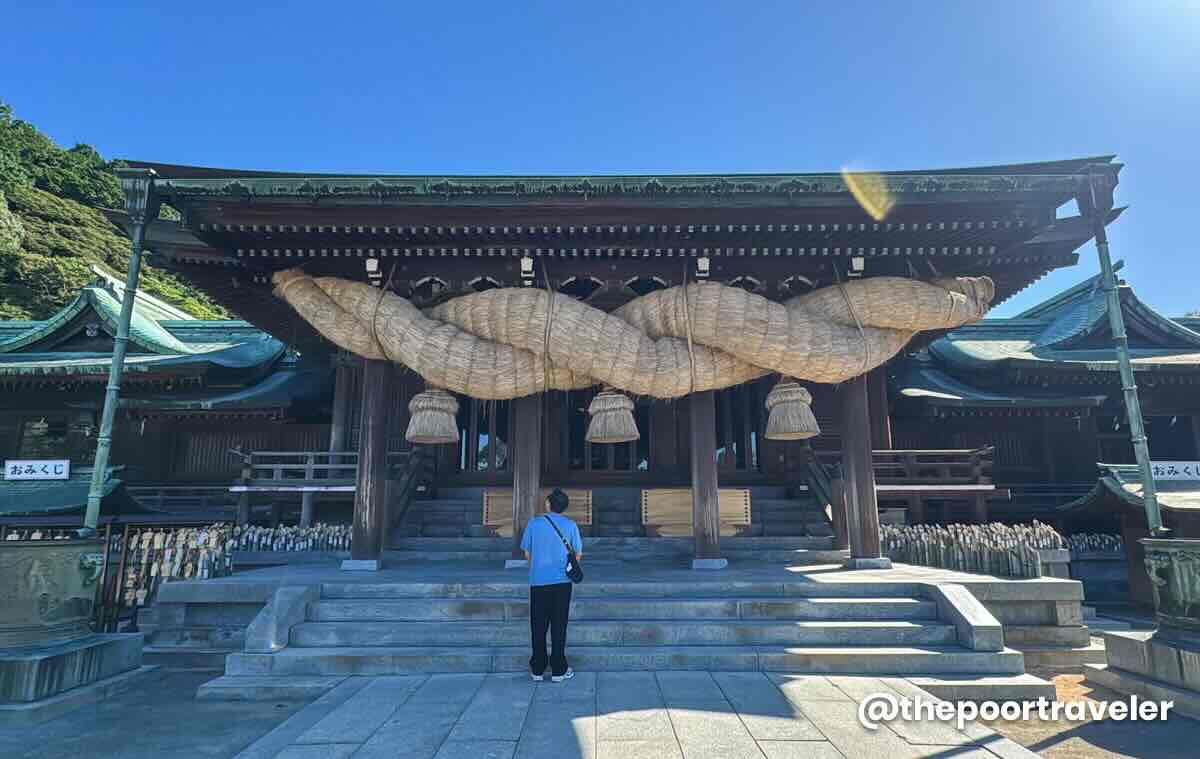
Situated in Fukutsu Metropolis, simply 40 minutes from Fukuoka Metropolis, Miyajidake Shrine is likely one of the prefecture’s most religious and photogenic spots. It’s devoted to the legendary Empress Jingu and is legendary for having Japan’s largest shimenawa (sacred straw rope), taiko drum, and bell, all proudly displayed throughout the shrine grounds. Every of them symbolizes safety, power, and connection between heaven and earth.
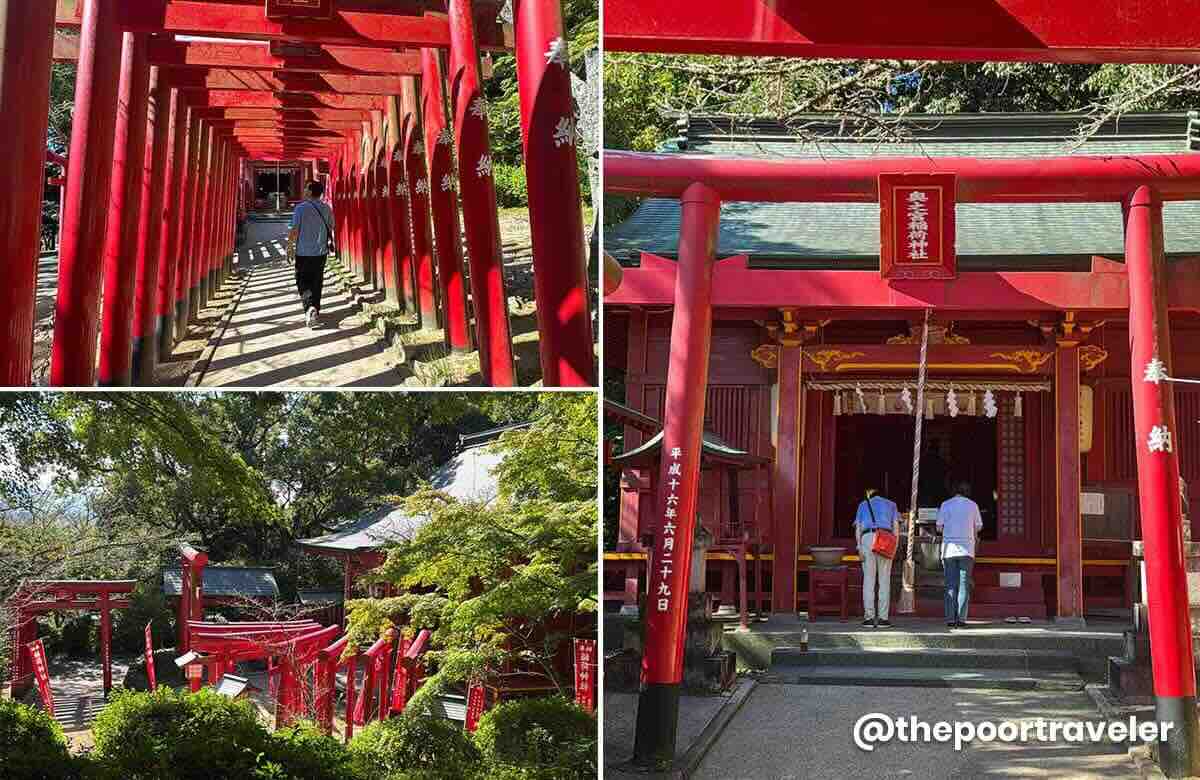
We started our go to exploring the shrine itself, marveling on the intricate woodwork and the sheer scale of the sacred rope. Then we adopted the trail behind the principle corridor, lined with vermillion inari gates. The quiet rustle of leaves and smooth temple drumming made it really feel virtually meditative.
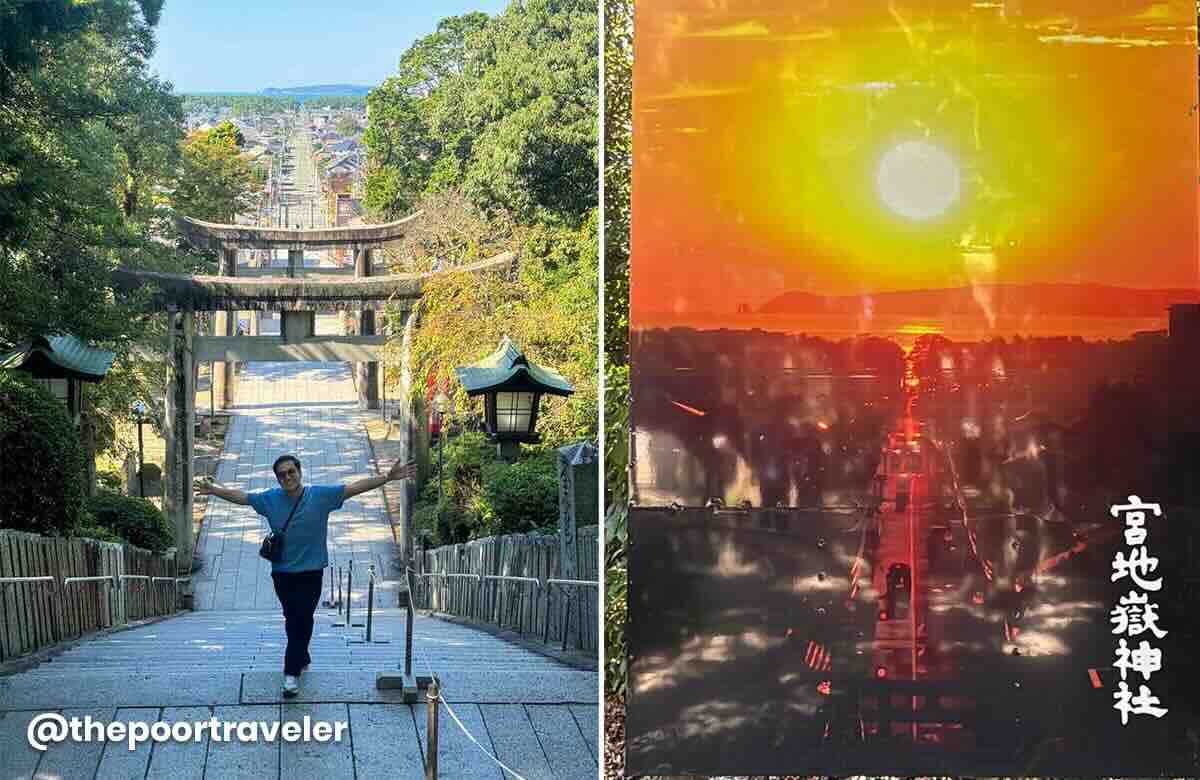
The shrine can be well-known for its Path of Mild, a wide ranging phenomenon that occurs twice a 12 months (February and October), when the setting solar aligns completely with the street main from the torii gate to the ocean. We visited within the morning, so we didn’t catch it, however standing there imagining that glowing path stretching to the horizon was magical sufficient. There are additionally photographs of it all over the place, so that you don’t even must think about.
Afterward, we walked right down to Miyajihama Seaside to see the final torii gate up shut, standing proudly towards the ocean backdrop!
Tackle: Miyajidake Shrine, 7-1 Miyajimoto-machi, Fukutsu Metropolis, Fukuoka, Japan
Working Hours: Shrine grounds – 24/7; Shrine Workplace/Amulet Space – Every day, 7:00 AM – 7:00 PM
How you can Get to Miyajidake Shrine: From Hakata Station, take the practice to Fukuma Station. Then switch to Bus 1-1 and alight at Miyajidake Jinja-mae Cease.
10. Tsuyazaki Sengen Previous City
Tsuyazaki Sengen is usually skipped by vacationers, nevertheless it is filled with nostalgic attraction. The city as soon as flourished as a port for sake brewing and salt manufacturing, and plenty of of its Edo- and Meiji-era buildings are nonetheless standing to today.
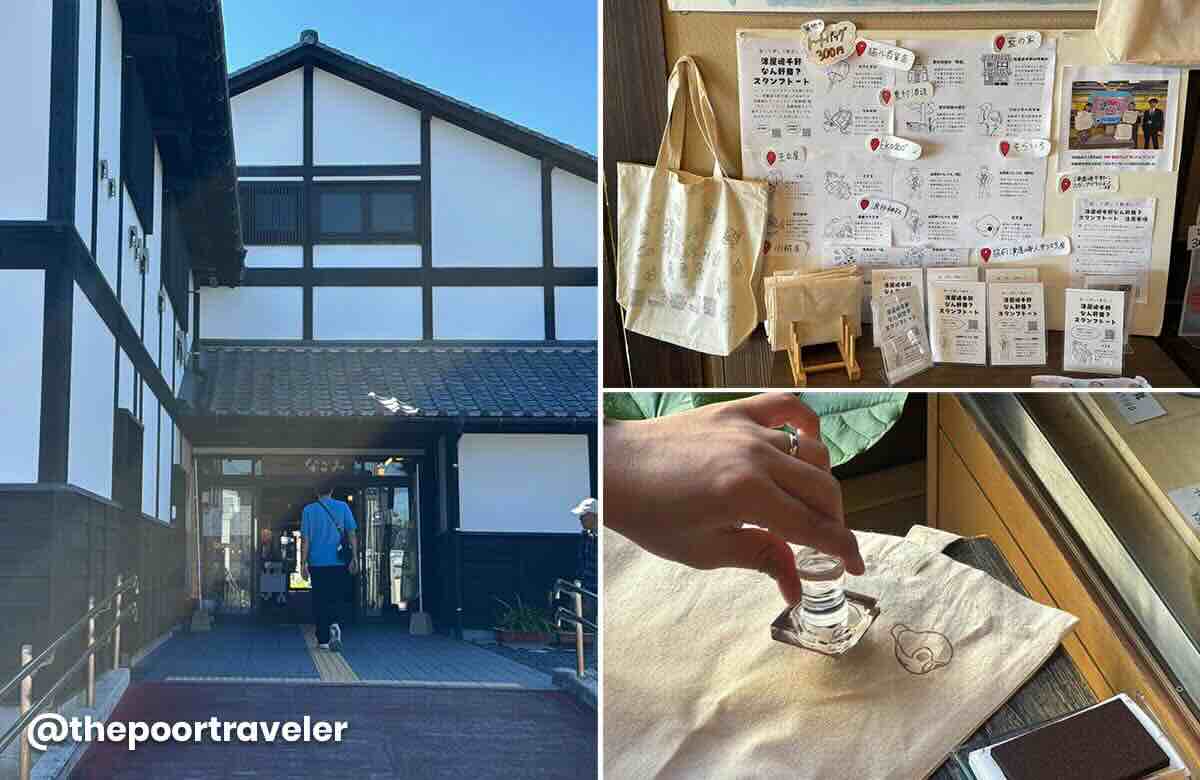
To make issues much more enjoyable, the city has provide you with a “stamp rally” expertise that lets guests acquire stamps from numerous outlets whereas exploring the realm.
We began on the Vacationer Info Middle (Tsuyazaki Sengen Nagomi), the place we obtained clean canvas tote baggage to embellish with the stamps we’d acquire alongside the best way. Our first cease was the Chikuzen Tsuyazaki Ningyo Kobo, a doll retailer and workshop the place we painted our personal Moma owl whistles. Mine was in cobalt blue and Vins’s in grey. Afterward, we stamped our little owls onto our tote baggage as a souvenir.

From there, we wandered by slim streets and popped right into a flower store, a former sake distillery, and a memento retailer to gather extra stamps. Every cease had its personal story and attraction, making the expertise really feel like a leisurely treasure hunt by time. By the tip, our tote baggage had was dwelling scrapbooks of our stroll by Tsuyazaki’s previous, a practical memento!
Tackle: Tsuyazaki Sengen Nagomi, 3 Chome-17-3 Tsuyazaki, Fukutsu Metropolis, Fukuoka, Japan
Working Hours: Every day, 9:00 AM – 5:00 PM
How you can Get to Tsuyazaki Sengen Nagomi: From Hakata Station, take the practice to Fukuma Station. Then switch to Bus 1-1 and alight at Tsuyazaki-Sengen and Nagomi Bus Cease. In the event you’re coming from Miyajidake Shrine, you possibly can simply take Bus 1-1 to the identical cease.
11. Toho Village
Within the quiet mountains of japanese Fukuoka lies Toho Village, a spot well-known for its pottery custom. Earlier than heading to the kilns, we stopped at Koishiwara Roadside Station (Michi no Eki) to browse Koishiwara ware, a mode of pottery with greater than 350 years of historical past. Acknowledged as an Intangible Cultural Property, Koishiwara ware is thought for its earthy tones, easy magnificence, and rhythmic patterns created utilizing carving and brush strategies.
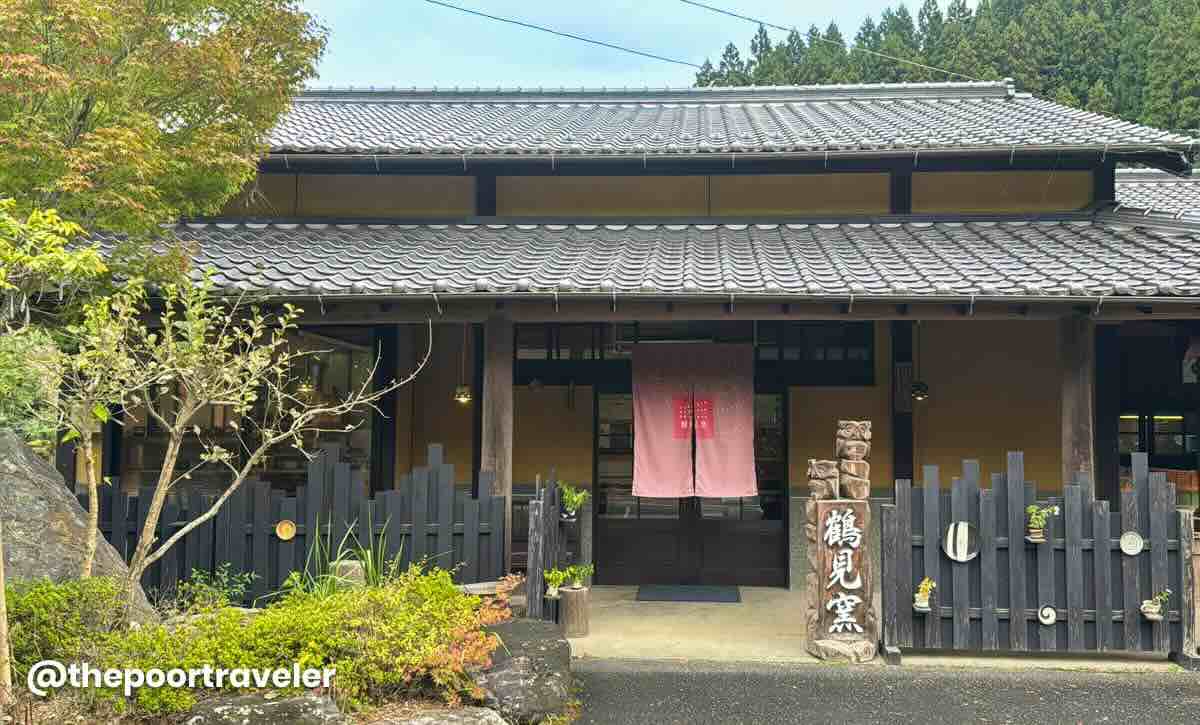
However after all, we didn’t come all the best way right here to only observe. We needed to get our fingers soiled, too — actually. We visited Tsurumi Kiln (Tsurumigama), a family-run workshop that focuses on a particular type of pottery that includes delicate spirals of tiny indentations. We had the pleasure of assembly Yoshihiro Wada, the proprietor and grasp potter at this store. Watching him at work was mesmerizing. He made it look really easy. However in actuality, it was powerful, which turned fairly apparent when it was our flip.
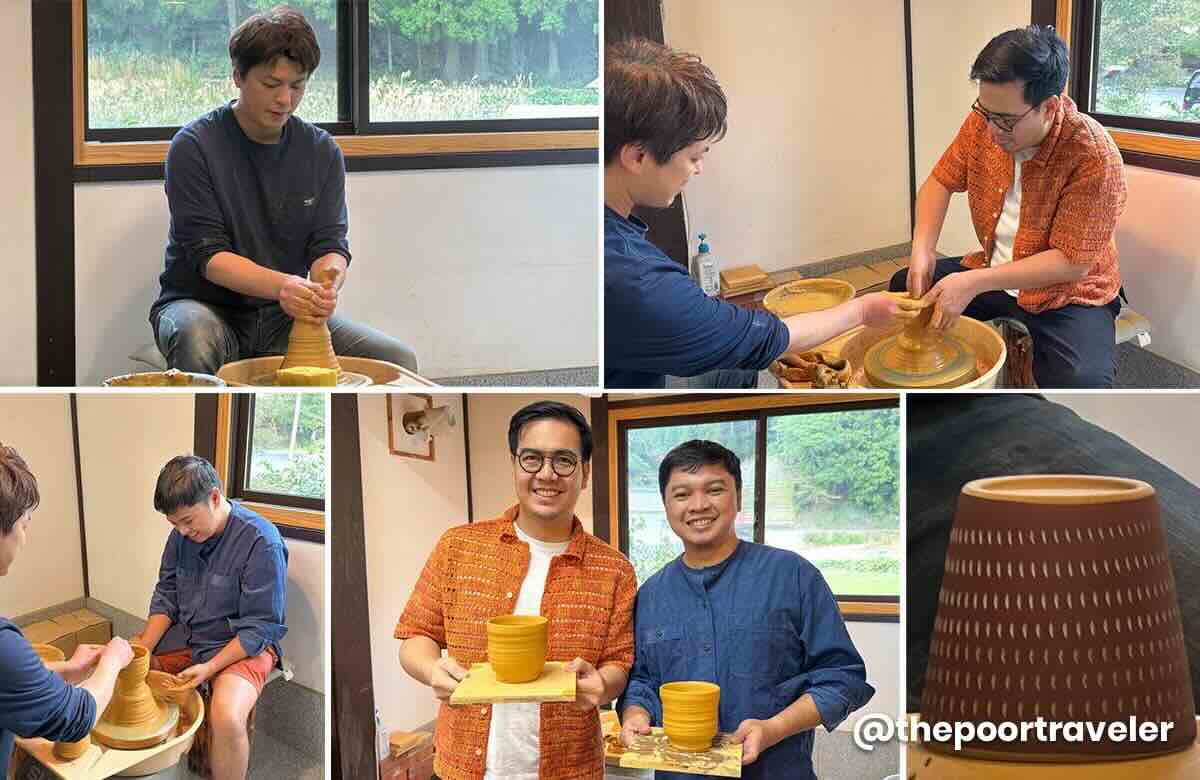
Sitting on the wheel, fingers coated in clay, I created my first ever piece — an ideal little ramen bowl. Besides, it was purported to be a cup! LOL. My hand’s stress was an excessive amount of. Yoshihiro-san saved telling me to “Straightforward, straightforward.” However I used to be at my “best.” I didn’t know the way a lot simpler I might nonetheless go. Vins was laughing at me, however then, when it was his flip, he mainly broke his cup!
It was each nerve-wracking and therapeutic. However all’s properly that ends properly. We nonetheless ended up with fairly decent-looking cups. The completed merchandise could be glazed and shipped to us later, a memento for all the nice instances we had right here in Toho Village.
Tackle: Tsurumi Kiln, 2514-3 Koishiwaratsuzumi, Toho Village, Asakura District, Fukuoka, Japan
Working Hours: Every day, 9:00 AM – 5:00 PM
How you can Get to Toho Village: Greatest reached by automotive. You possibly can hire a automotive in Fukuoka and drive all the best way to Toho Village.
12. Ringo to Budou no Ki
Fruit lovers, this one’s for you. Ringo to Budou no Ki (actually “The Tree of Apples and Grapes”) is a family-run farm and café that lets guests get pleasure from fruit choosing and do-it-yourself sweets. Relying on the season, you possibly can choose apples, grapes, and persimmons.
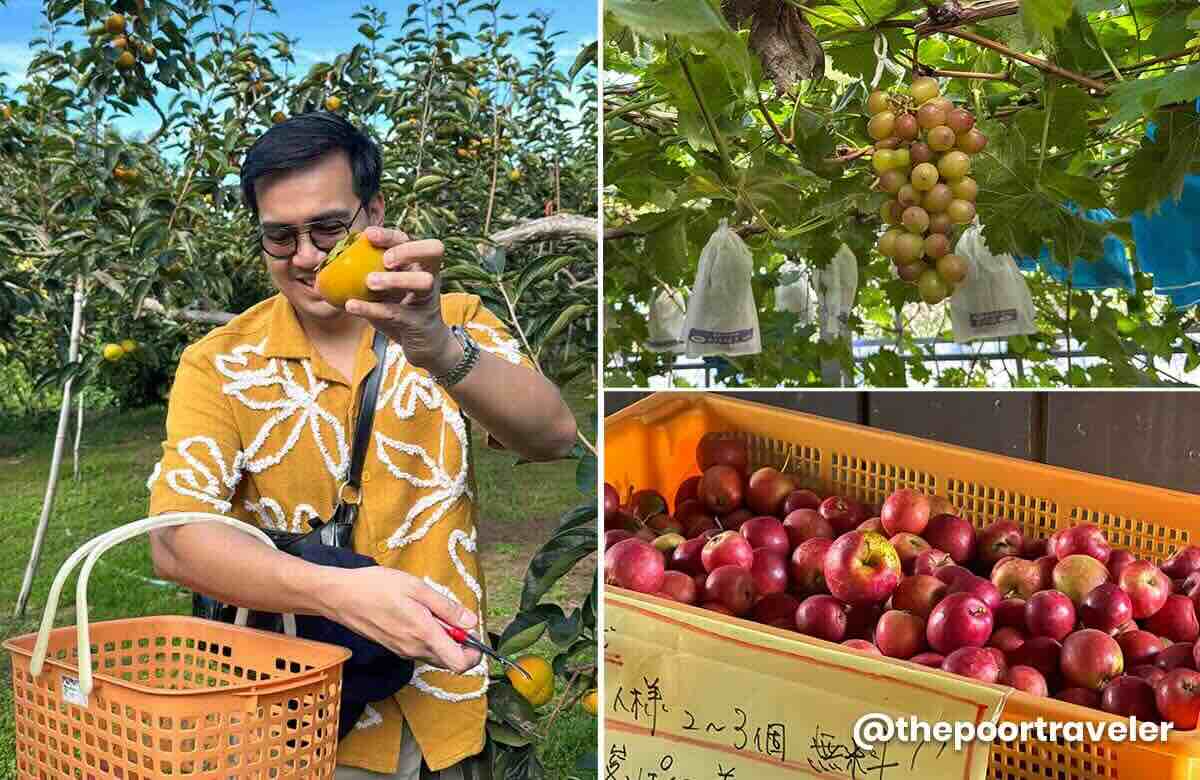
We spent the morning wandering by the orchards, baskets in hand, filling them with juicy apples and crisp persimmons. I used to be significantly enthusiastic about persimmons as a result of they’re so unusual right here within the Philippines. There’s one thing extremely satisfying about harvesting your individual fruit, particularly when the homeowners are so heat and welcoming. He would additionally choose one and slice it for everybody to get pleasure from on the spot. We have been then led to the winery to select grapes!
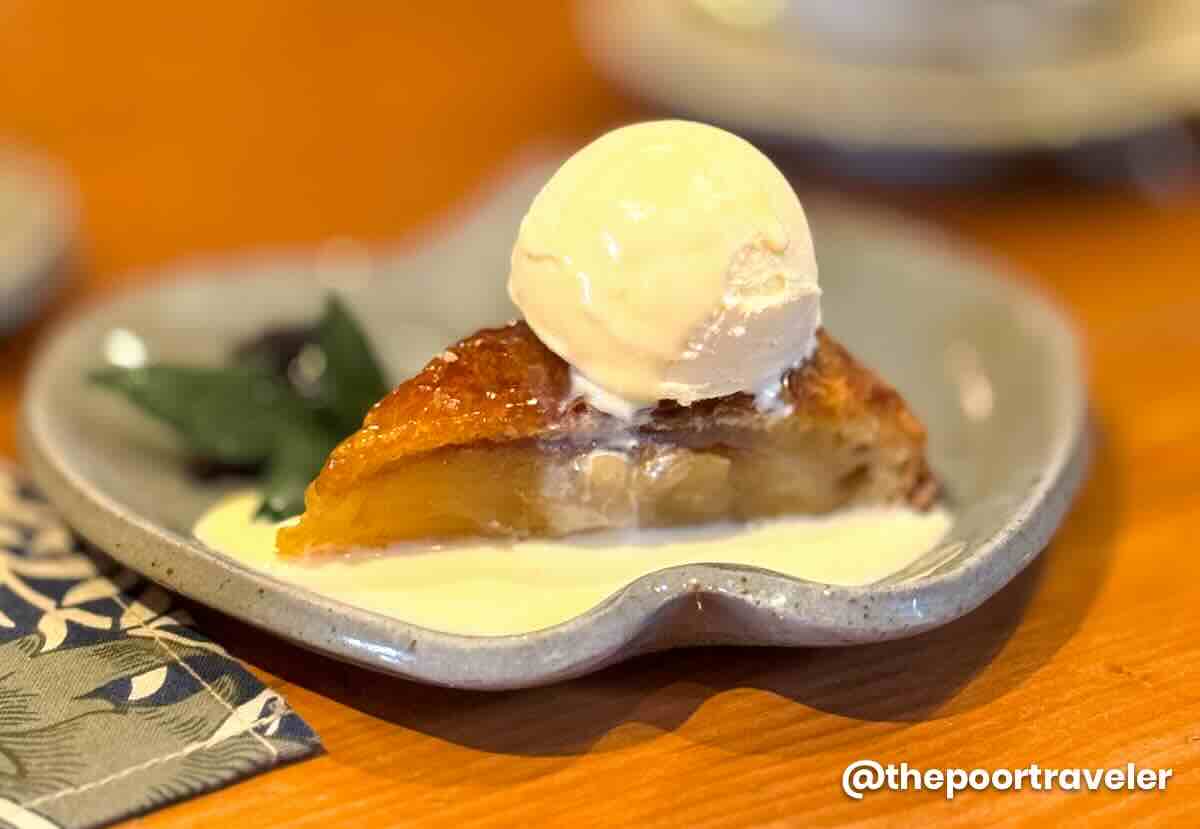
After working up an urge for food, we headed to their café for what is likely to be one of the best apple pie of our lives. Granted, we haven’t had that many apple pies, however this one set the bar excessive. The crust was crisp, the filling smooth and candy, and it paired completely with a cup of scorching espresso. It was a kind of easy moments that felt like the right snapshot of rural Japan.
Tackle: Ringo to Budou no Ki, Yamada, Asakura, Fukuoka, Japan
Working Hours: Every day, 10:00 AM – 6:00 PM
How you can Get to Ringo to Budou no Ki: From Hakata Station, take the Kagoshima Line to Futsukaichi Station. Swap to Bus 40 certain for Haki and get off at Sanrensuisha-no-sato Cease. Stroll for 14 minutes to the orchard.
13. Triple Water Wheels
Additionally in Asakura, the Triple Water Wheels is an emblem of Japanese ingenuity and rural life. Inbuilt 1789, these three interconnected wheels are nonetheless operational, channeling river water into close by rice fields utilizing conventional strategies. They’re among the many oldest functioning water wheels in Japan and have been designated as an Necessary Cultural Property.
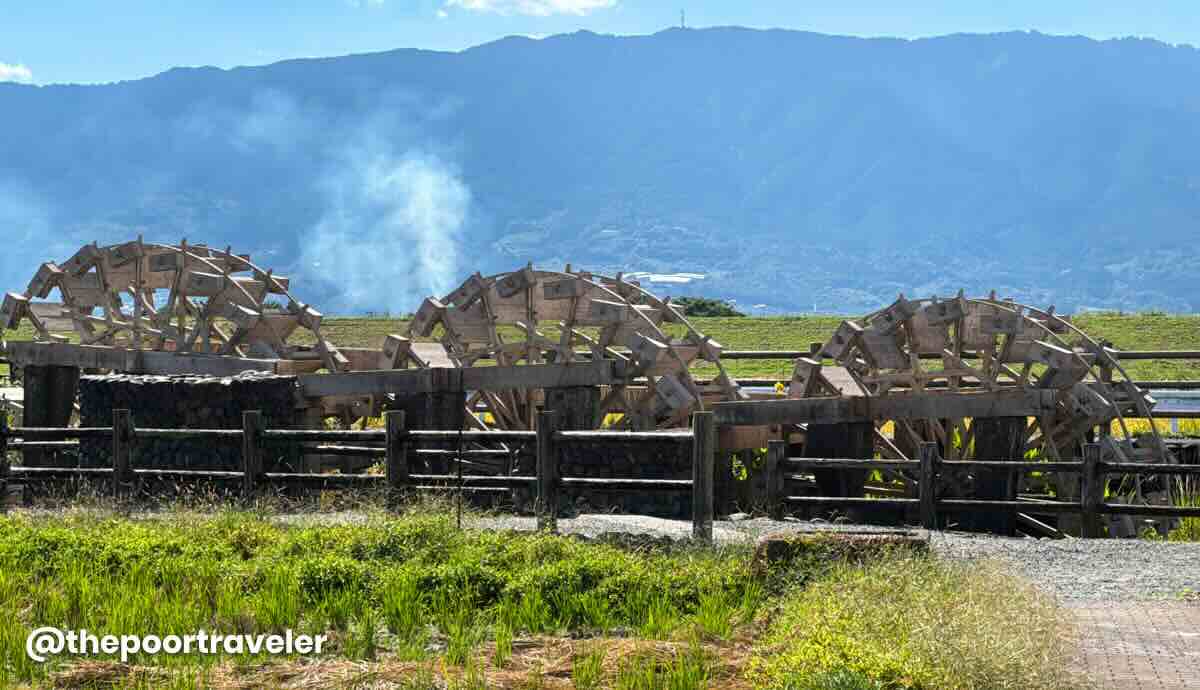
Sure, it’s nonetheless operational, however solely in sure months of the 12 months. And our go to didn’t fall inside that interval, so we didn’t get to see it in motion. However there’s one thing awe-inspiring about seeing centuries-old expertise nonetheless getting used right this moment.
After admiring the wheels, we took a brief stroll to a close-by lotus and koi ponds and a bee farm, established by Fujii Yohojo. Inside is a mini-museum and a store, promoting numerous sorts of native and imported honey. You can pattern them, too. I actually loved the honey produced by bees right here in Asakura, in order that’s what I took house with me. We additionally had honey-coated candy potato chunks.
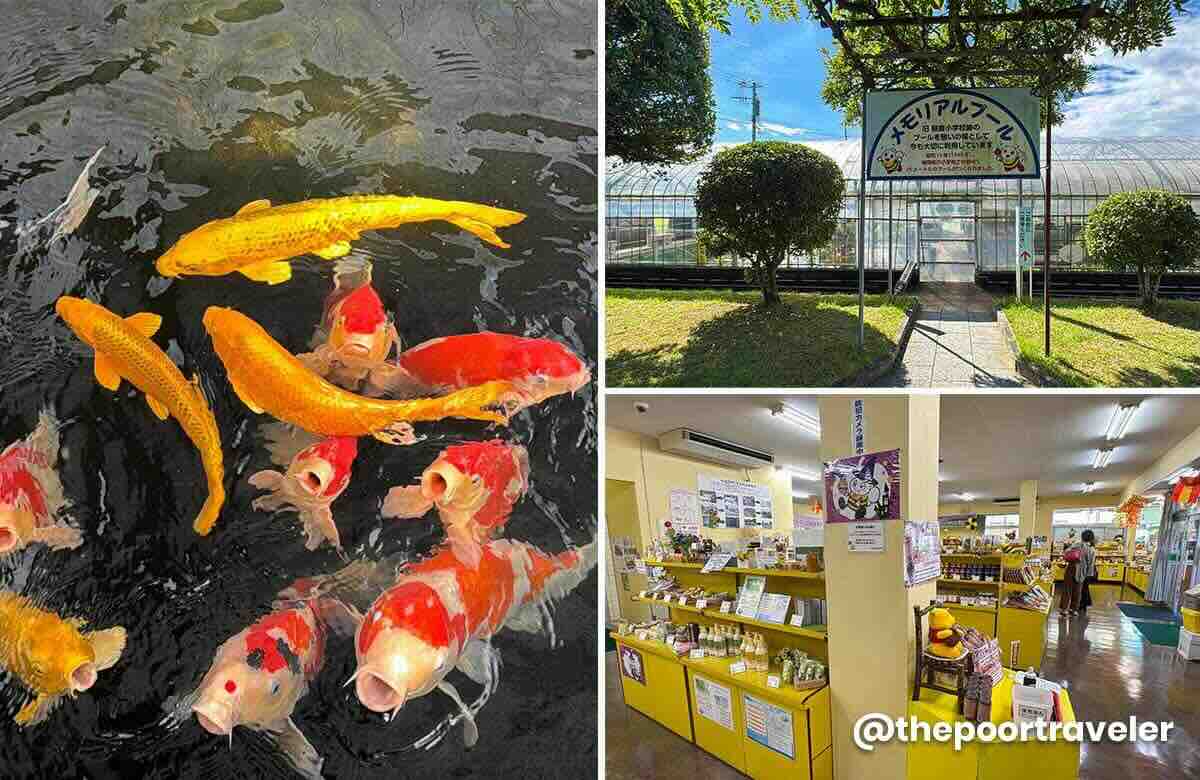
Agriculture-based points of interest are sometimes not everybody’s cup of tea, however we actually loved our time right here. It was a quiet, countryside expertise that felt worlds away from the bustle of Fukuoka Metropolis.
Tackle: Triple Water Wheels, Hishino, Asakura, Fukuoka, Japan
Working Hours: 24/7
How you can Get to Hishino Triple Water Wheels: If from Hakata Bus Terminal, take Bus 400 to Nakamuta. Then Bus 40 to Hishino Bus Cease. In the meantime, if from Ringo to Budo No Ki, you possibly can simply stroll all the best way to the wheels for 21 minutes.
14. Yoshii White Partitions District
Welcome to my type of city! As somebody who calls himself Yoshi, I already determined I’d adore it from the get-go!

In the event you’re into previous cities and conventional structure, Yoshii White Partitions District in Ukiha Metropolis is pure eye sweet. The realm flourished through the Edo interval as a service provider hub, and right this moment it nonetheless boasts rows of white-walled kura (storehouses) and conventional wood machiya homes. They’re white as a result of after an enormous hearth that ruined the city, the folks determined to rebuild their homes utilizing plaster, which is fire-resistant.
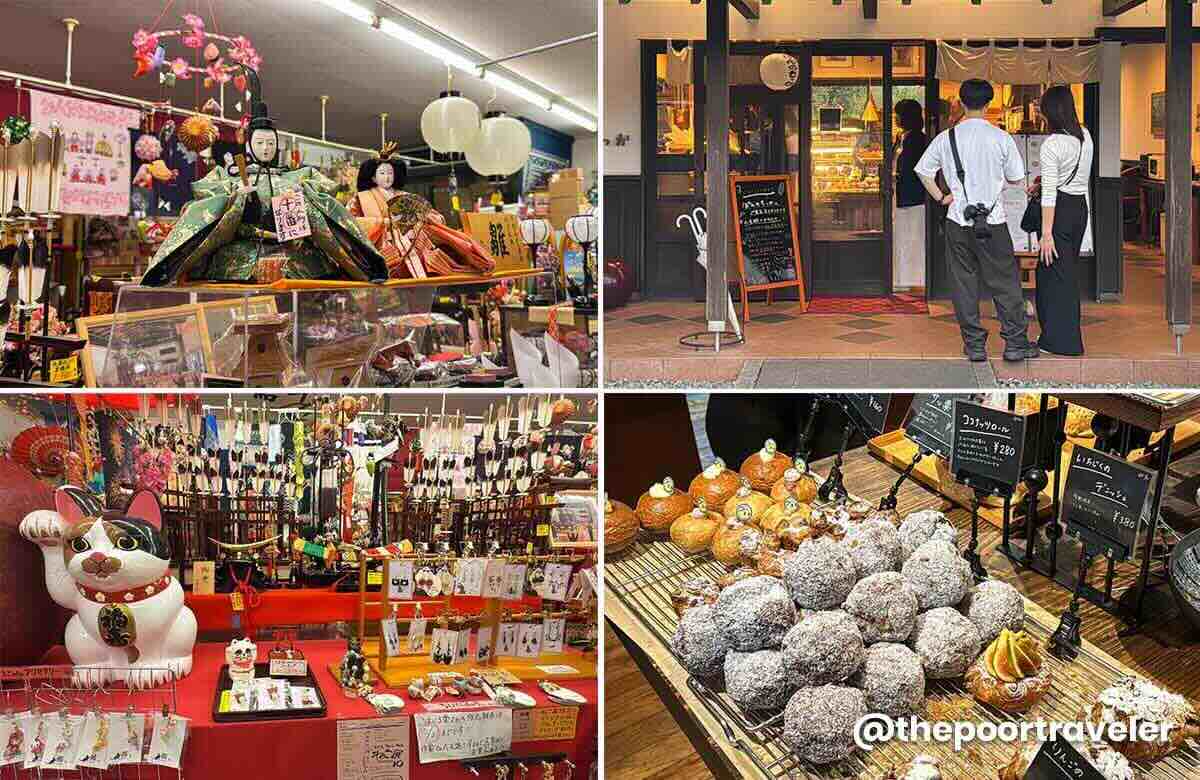
We spent the afternoon simply strolling round, dipping into little outlets as we went. One among our favorites was a Japanese doll store. Except for conventional dolls, in addition they promote quite a lot of cat-themed objects. Then, after all, we couldn’t resist Pan no Mocca Bakery, promoting croissants and different baked items. Their pastries have been so good we purchased extra “for later”…and ate them 5 minutes after leaving.
Tackle: Yoshii White Partitions, Yoshii Shirakabe-dori Road, Ukiha Metropolis, Fukuoka, Japan
Working Hours: Public Townscape – Open year-round, some outlets have personal hours; Pan no Mocca (Bread Mocca) – Tuesday to Wednesday & Friday to Sunday, 9:00 AM – 6:00 PM
How you can Get to Yoshii White Partitions District: From Hakata Station, take the practice to Chikugo-Yoshii Station. Then stroll from there.
15. Ukiha Inari Shrine
Only a 10-minute drive from Yoshii, excessive on a hillside overlooking the Chikugo Plain, sits Ukiha Inari Shrine, probably the most scenic in Fukuoka. It’s recognized for its lengthy line of over 90 torii gates straddling 300 steps that lead all the best way as much as the principle shrine.
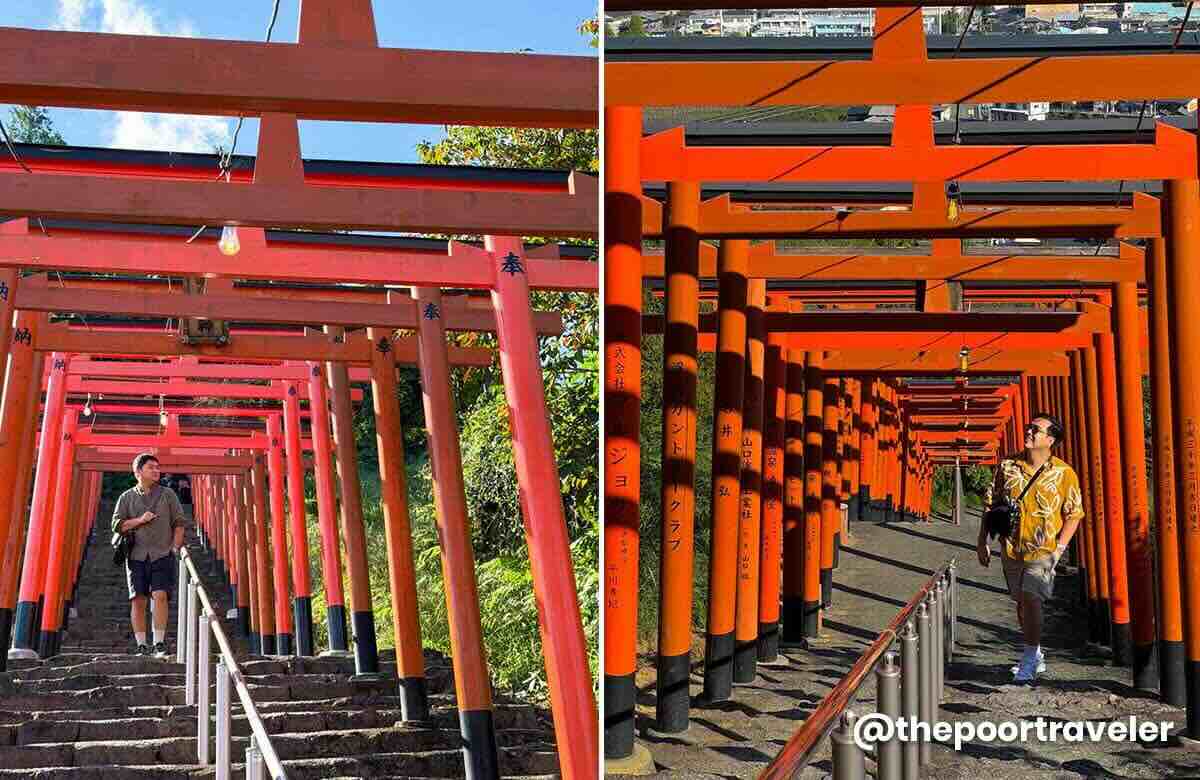
We climbed the steps early within the morning, the daylight filtering by the purple gates like a transferring highlight. Each flip revealed one other layer of countryside views — fields, rooftops, and the faint define of mountains within the distance. It was a little bit of a exercise, however the peacefulness on the prime made all of it price it.

The shrine itself enshrines Inari, the deity of prosperity, fertility, and agriculture, symbolized by foxes. Locals come right here to hope for enterprise success and good harvests. Behind the shrine is a huge rock, adorned with a garland, and a small shrine with choices.
Tackle: Ukiha Inari Shrine, 1513-9 Ukihamachi Nagarekawa, Ukiha Metropolis, Fukuoka, Japan
Working Hours: 24/7
How you can Get to Ukiha Inari Shrine: From Chikugo-Yoshii Station, take the Bus 吉井線 左回り, certain for Ukiha Shimin Middle. Alight at Osaka (Ukiha Inari Shrine Ent.) Bus Cease. Then stroll from there.
16. Nyoirinji Frog Temple
Now this one’s ribbiting — I imply, riveting. The Nyoirinji Temple in Ogori is famously nicknamed the Frog Temple due to its large assortment of frog statues. It’s laborious to overlook, even from the car parking zone, the place you’ll be greeted by the large stone amphibians, the place you might write your needs. After all, we wished for extra blessings for all TPT followers!

The trail to the temple was lined with picturesque umbrellas and colourful lanterns, which was a sight to behold by itself. However whenever you attain the highest, it’s frog overload! There are reportedly over 5,000 frogs of all shapes, sizes, and supplies scattered all through the temple grounds. It’s a small temple, however each nook is filled with pleasant surprises: frogs holding umbrellas, meditating frogs, even stone frog households mid-conversation.
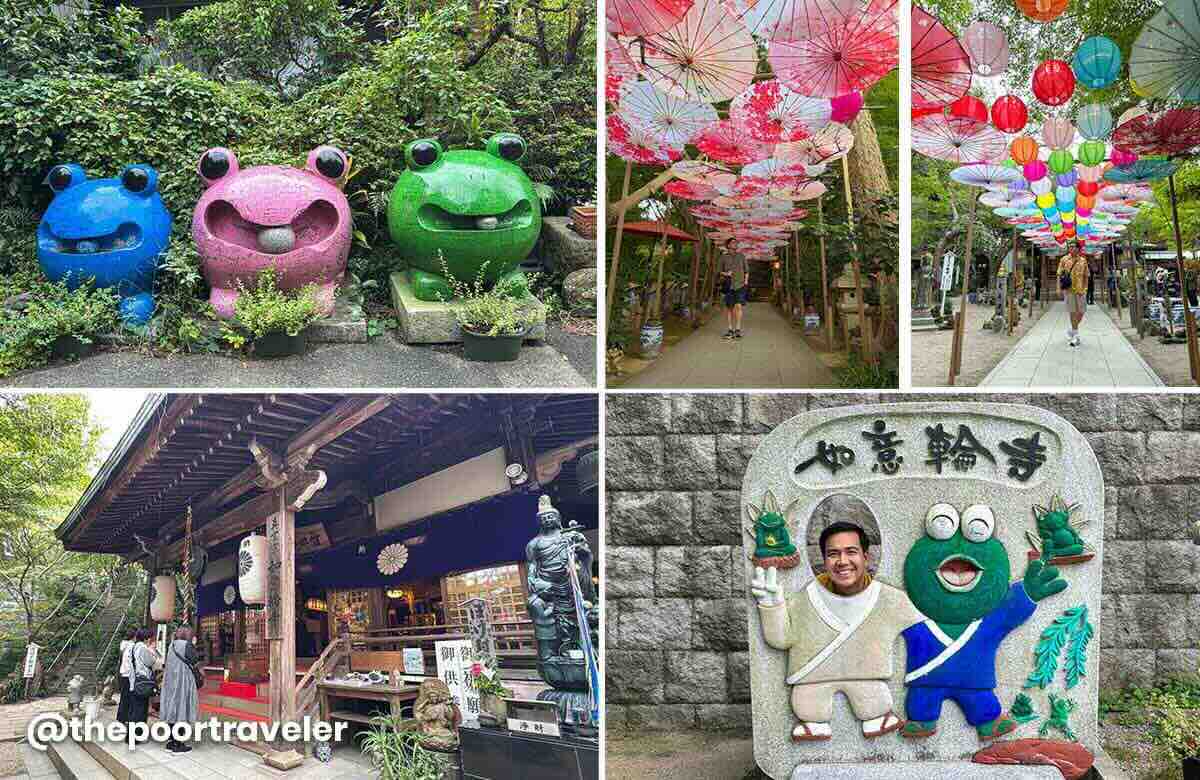
The temple’s connection to frogs comes from the Japanese phrase “kaeru,” which suggests each “frog” and “to return.” Individuals come right here to hope for protected travels and for misplaced issues or folks to return house.
You’ll additionally discover a large golden frog! They are saying that in the event you make it by the mouth of the frog, you can be rejuvenated, your vitality and happiness can be restored, and dangerous luck will flip to luck. So after all, I attempted it. I used to be a bit scared that my bulging tummy would get caught however I powered by! Vins, too, made it by efficiently.
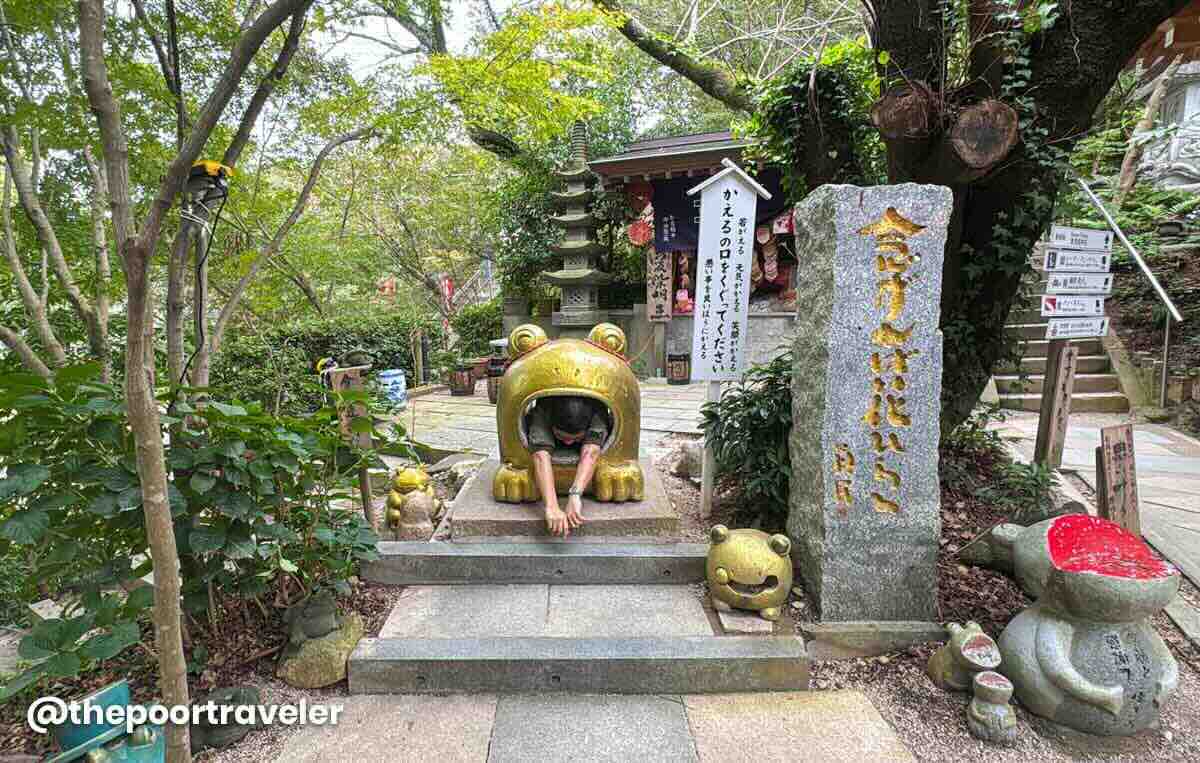
We couldn’t assist however smile the entire time. It’s kitschy, sure, nevertheless it’s additionally heartfelt. The resident monks clearly take delight in curating this quirky assortment, and you permit feeling just a little lighter and happier.
Tackle: Nyoirinji Frog Temple, 1728 Yokoguma, Ogori Metropolis, Fukuoka, Japan
Working Hours: Every day, 8:00 AM – 5:00 PM
How you can Get to Nyoirinji Frog Temple: From Hakata Station, take Nanakuma Subway Line to Yakuin Station. Switch to Nishitetsu-Tenjin-Omuta Line to Mikunigaoka Station. It’s a 21-minute stroll from there.
17. Migita Fruit Farm


That is situated in Kurume, about 20 minutes away from the town. Kurume’s location alongside the Chikugo River makes it fertile and viable for fruit timber to thrive. Migita Fruit Farm is a kind of locations the place guests can get pleasure from nature and native produce like persimmons, strawberries, peaches, blueberries, figs, and others. You possibly can go to all 12 months spherical, however it’s essential examine which fruit tree is within the season in your go to, particularly for fruit-picking actions (persimmon or strawberry).
Location: Migita Fruit Farm, 3024, Tanushimarumachi Chitoku, Kurume Metropolis, Fukuoka, Japan
Opening Hours: Strawberry Season (January to April) – Wednesday, Thursday, Saturday & Sunday, 10:00 AM – 2:00 PM; For Persimmon Season (September to November), examine the official web site for more information.
Strawberry Choosing Charge: January to March – Grownup, ¥2300; College students, ¥1500; Kids (3-5 y/o), ¥1200; April – Grownup, ¥1600; College students, ¥1300; Kids (3-5 y/o), ¥1000. Kids 2 years previous and under can enter for FREE.
Nearest Station: JR Tanushimaru Station. The farm is simply 10 minutes away by taxi from the station.
18. Umi Hachimangu
Some of the traditionally important shrines in Fukuoka, Umi Hachimangu, dates again over 1,300 years. On the coronary heart of the shrine is the sacred statue of Empress Jingu holding child Ojin. However it’s only exhibited to the general public at Shikinen Taisai, a grand pageant that’s held solely as soon as each 25 years!
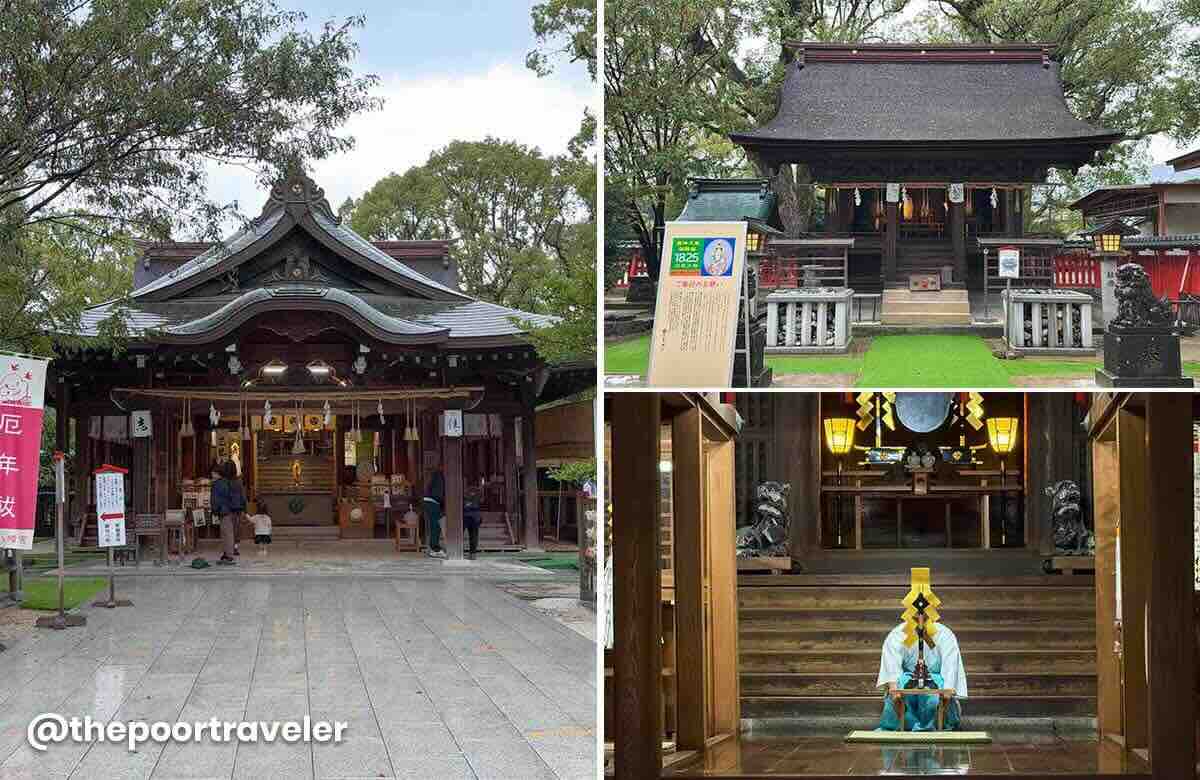
This website is claimed to be the birthplace of Emperor Ojin, whose mom, Empress Jingu, safely delivered him right here after coming back from a army expedition. Due to that, the shrine turned a main pilgrimage website for protected childbirth and youngster blessings. Expectant moms come to hope for a straightforward supply, and also you’ll usually see households providing child bibs and tiny charms.
One other factor we additionally undoubtedly seen was the sheer variety of stones with writings on them. Apparently, these praying for a child or a protected supply might get a stone from the shrine and take it house with them. When they’re blessed with a child, they return to the shrine with two stones bearing the identify and delivery date of the kid.
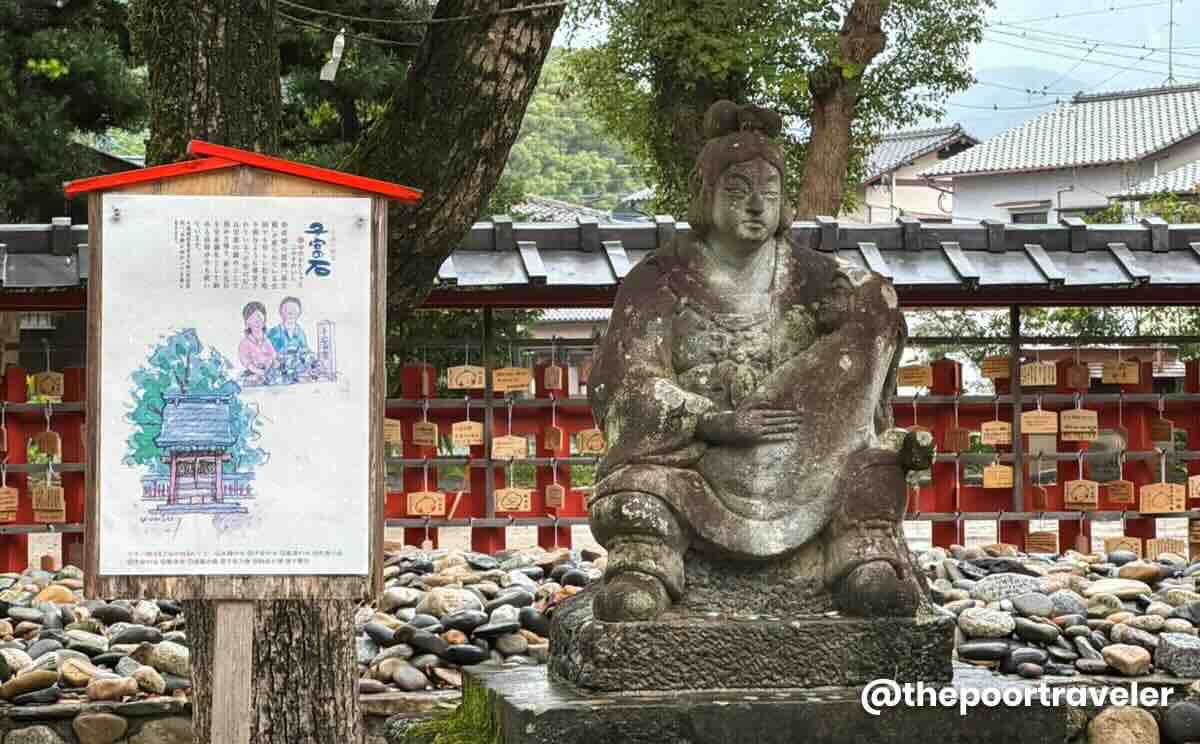
The ambiance right here is calm and reverent, with historic camphor timber towering overhead. And by historic, we imply over 2000 years previous, so claimed the shrine. The 2 largest listed below are known as “Yufuta’s Forest” and “Kinukake’s Forest”. There’s additionally one that’s virtually hole. Whereas guests should not normally allowed to enter the tree, we requested and got permission. And once we regarded up, lo and behold, we noticed a coronary heart shining down on us.
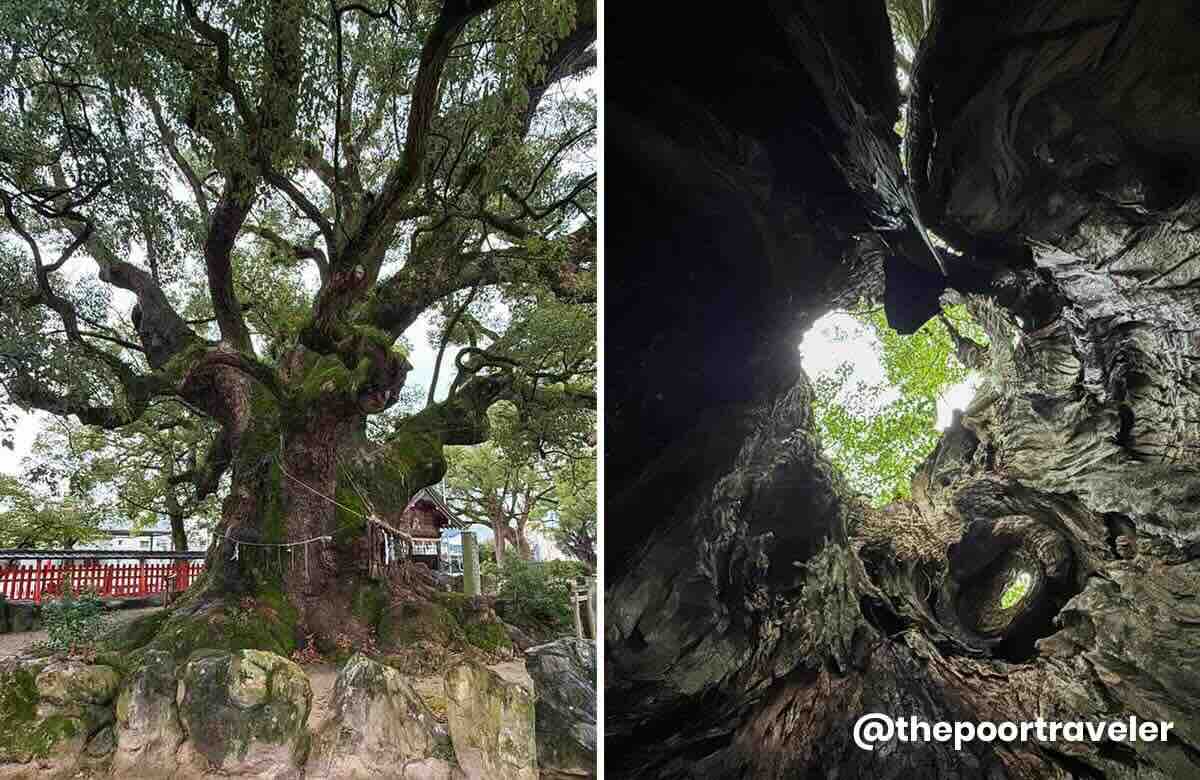
By the best way, simply exterior the shrine grounds, there’s a beautiful pastry store known as Tokinose, well-known for its wagashi or conventional confectionery. We grabbed a few pastries, they usually have been actually good.
Tackle: Umi Hachimangu, 1 Chome-1-1 Umi, Kasuya District, Fukuoka, Japan
Working Hours: Every day, 9:00 AM – 5:00 PM
How you can Get to Umi Hachimangu: From Hakata Bus Terminal, take Bus 32 certain for Kami Umi. Get off at Umi Hachiman-mae Bus Cease. It’s simply in entrance of the shrine. Journey time is 38 minutes.
19. Sakurai Futamigaura
If Fukuoka Metropolis is the bustling coronary heart of Kyushu, then Itoshima is its laid-back beachy soul. Simply 40 minutes from downtown, this coastal space is an area favourite for browsing, cafés, and photogenic seaside views. It’s the place Fukuoka people escape after they want a break from metropolis life.
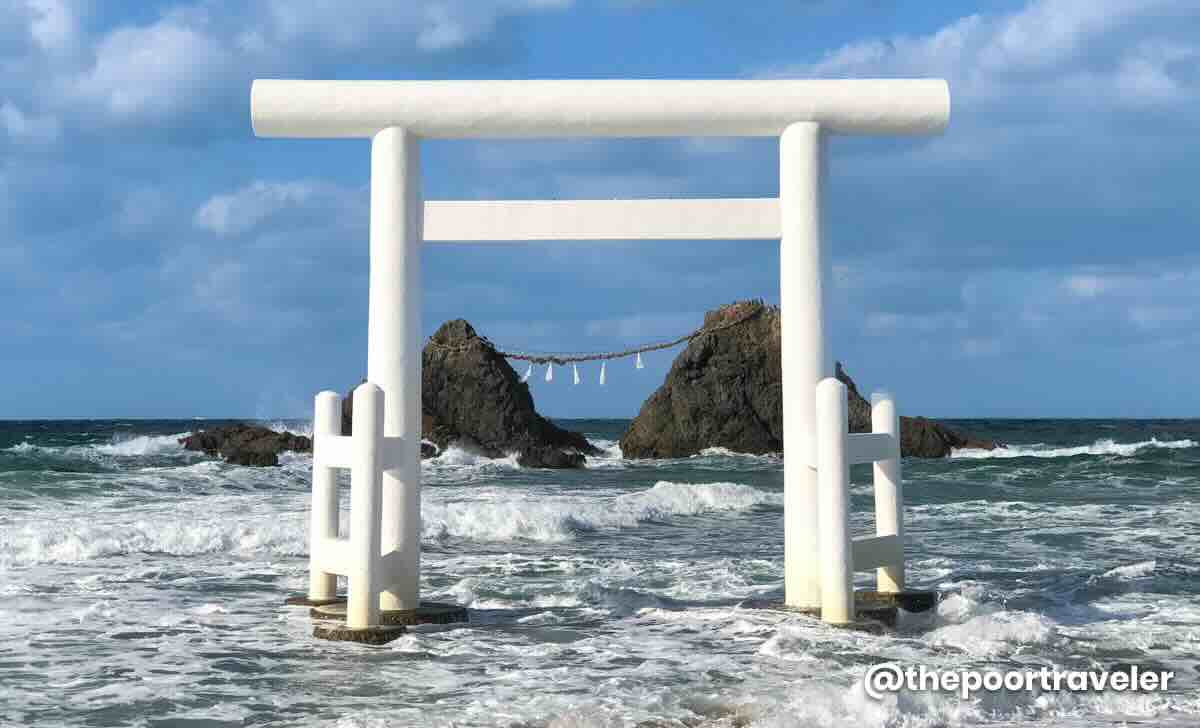
The spotlight for us was Sakurai Futamigaura, house to the well-known “wedded rocks” — two giant stones related by a sacred rope, symbolizing concord and marriage. They sit offshore, with a white torii gate framing them completely. It’s mentioned that those that go to are blessed with a wholesome marriage or love life.
Tackle: Sakurai Futamigaura, Shima, Sakurai, Itoshima, Fukuoka 819-1304, Japan
How you can Get to Sakurai Futamigaura: From Hakata Bus Terminal, take a West Coast Liner Bus (ウエストコーストライナー) to Futamigaura. Journey time ia 1 hour and 10 minutes.
20. Nanzoin Temple
A lot nearer to Fukuoka Metropolis lies Nanzoin Temple in Sasaguri, the place you’ll see one in all Japan’s largest bronze reclining Buddhas. Once we say giant, we imply gigantic. The statue is 41 meters lengthy and 11 meters excessive, even greater than the one in Thailand’s Wat Pho. It represents Buddha getting into Nirvana.
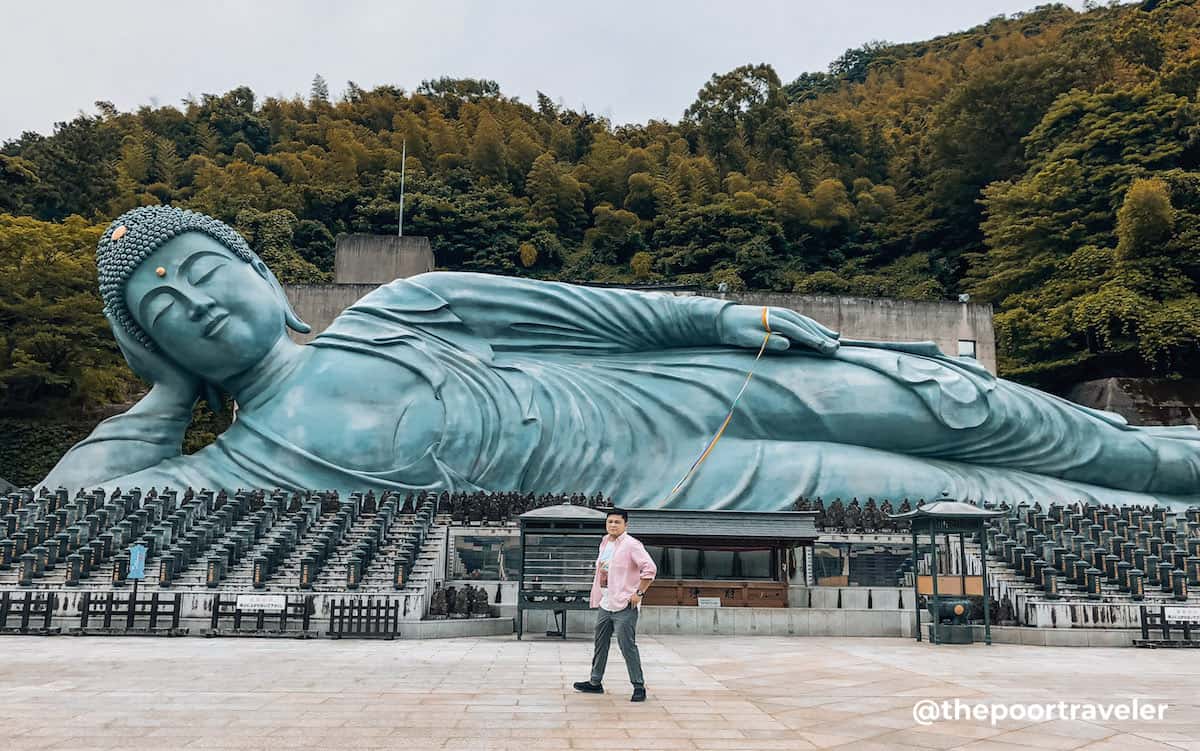
We visited this years in the past, and I nonetheless bear in mind it fairly vividly. We approached the temple by a peaceable forest path lined with smaller statues and prayer wheels. As quickly as the large Buddha got here into view, we simply stood there speechless for some time. It’s so colossal that it feels virtually unreal. You possibly can even contact the Buddha’s ft, mentioned to convey good luck.
The temple itself is a part of the Sasaguri Pilgrimage.
Tackle: Nanzoin Temple, 1035 Sasaguri, Kasuya District, Fukuoka, Japan
Working Hours: Every day, 9:00 AM – 4:30 PM
How you can Get to Nanzoin Temple: From Hakata Station, take the Fukuhokuyutaka Line to Kidonanzoin-Mae Station. Journey time is 24 minutes.
21. Dazaifu Tenmangu Shrine
No Fukuoka journey is full with out visiting Dazaifu Tenmangu, devoted to Sugawara no Michizane, the Shinto god of studying. The shrine is likely one of the most necessary Tenmangu shrines in Japan, drawing hundreds of thousands of scholars annually who come to hope for good grades and educational success.

We walked throughout the well-known vermilion bridges resulting in the principle corridor, surrounded by plum timber that Michizane liked throughout his lifetime. In the event you go to in late February, the whole space bursts into pink and white blossoms, making it probably the most lovely plum-viewing spots in Kyushu.
Earlier than leaving, we sampled umegae mochi, a grilled rice cake crammed with candy purple bean paste. It’s the native specialty, and the scent alone will lure you in.
Tackle: Dazaifu Tenmangu Shrine, 4 Chome-7-1 Saifu, Dazaifu Metropolis, Fukuoka, Japan
Working Hours: Every day, 6:30 AM – 7:00 PM
How you can Get to Dazaifu Tenmangu Shrine: From Hakata Bus Terminal (1F), take the direct native bus to Dazaifu Station. Then stroll for 4 minutes.
22. Kawachi Fujien Wisteria Backyard
Kawachi Fujien and the following merchandise on this listing are two flower parks that we haven’t visited but due to dangerous timing, however these two have at all times been on our bucket listing as a result of, properly, we love flowers!
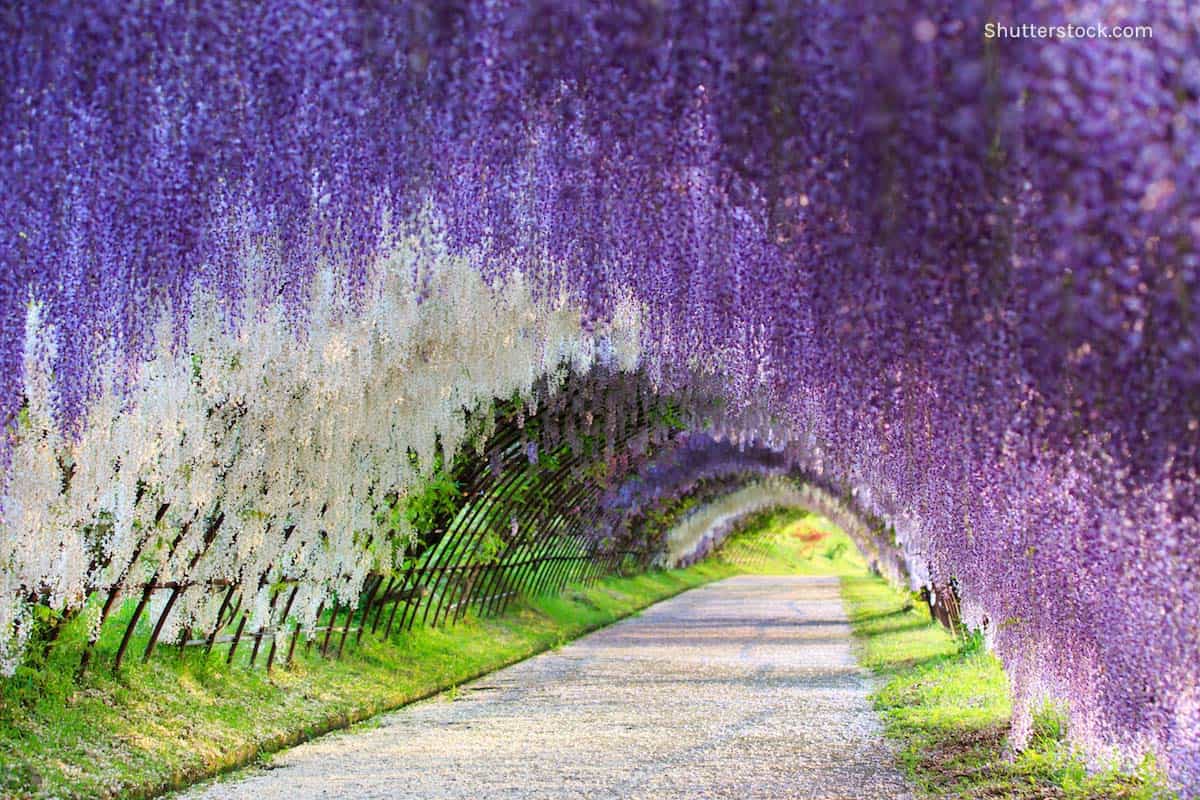

They are saying that few locations in Japan can rival the fairytale fantastic thing about Kawachi Fujien in Kitakyushu. This non-public backyard is house to one in all Japan’s most well-known wisteria tunnels, a walkway draped in cascading purple, pink, and white blossoms. It’s sometimes open to the general public solely throughout wisteria season (late April to early Could), and tickets promote out quick. And that’s the reason, regardless of a number of journeys to Fukuoka, we nonetheless haven’t seen it.
Tackle: Kawachi Wisteria Backyard, 2 Chome-2-48 Kawachi, Yahatahigashi Ward, Kitakyushu Metropolis, Fukuoka, Japan
Working Hours: For Wisteria season – Late April to early Could, 8:00 AM – 6:00 PM; For Autumn foliage – Mid-November to early December, 9:00 AM – 5:00 PM
23. Nokonoshima Island

Only a brief ferry experience from the town, Nokonoshima Island is thought for its Nokonoshima Island Park, the place huge fields of flowers bloom year-round — sunflowers in summer time, cosmos in autumn, and poppies and cherry blossoms in spring! And sure, we wish to go to it in spring throughout Sakura season, nevertheless it has but to occur.
Tackle: Nokonoshima Island Park, 能古島, Nishi Ward, Fukuoka Metropolis, Fukuoka, Japan
Working Hours: Every day, 9:00 AM – 5:30 PM
24. Fukuoka Meals Journey
However one factor we by no means fail to do when in Fukuoka? Eat. A Fukuoka things-to-do listing with out meals? That’s prison! We’ve to speak about meals. Fukuoka is the birthplace of tonkotsu ramen, that wealthy, creamy pork-bone broth that’s consolation in a bowl. Whether or not it’s on the legendary chain like Ichiran or an area favourite ramen-ya like Shin Shin, one slurp and also you’ll perceive why this metropolis takes its noodles so critically.
However don’t cease there. At night time, head to the yatai, open-air meals stalls that pop up alongside the riverbanks, particularly in Nakasu. Right here you possibly can eat like an area, shoulder-to-shoulder with strangers, having fun with yakitori, tempura, and ramen underneath the night time sky.
Meals is the heartbeat of the prefecture. So sure, come for the ramen…however keep for every little thing else. And we’ll be sharing with you a few of the finest meals locations we tried in our subsequent submit.
25. Procuring
We will’t finish this listing with out procuring. Retail remedy in Japan is at all times enjoyable and rewarding, and the identical holds true for Fukuoka. Inside the metropolis correct, you’ll discover malls and shops, however maybe probably the most iconic is Canal Metropolis Hakata, a large leisure advanced usually known as a “metropolis inside a metropolis.” It’s obtained every little thing — outlets, eating places, a theater, a fountain present, even a small river flowing proper by the center. You possibly can actually eat ramen, store luxurious manufacturers, and catch a light-weight present with out stepping exterior.
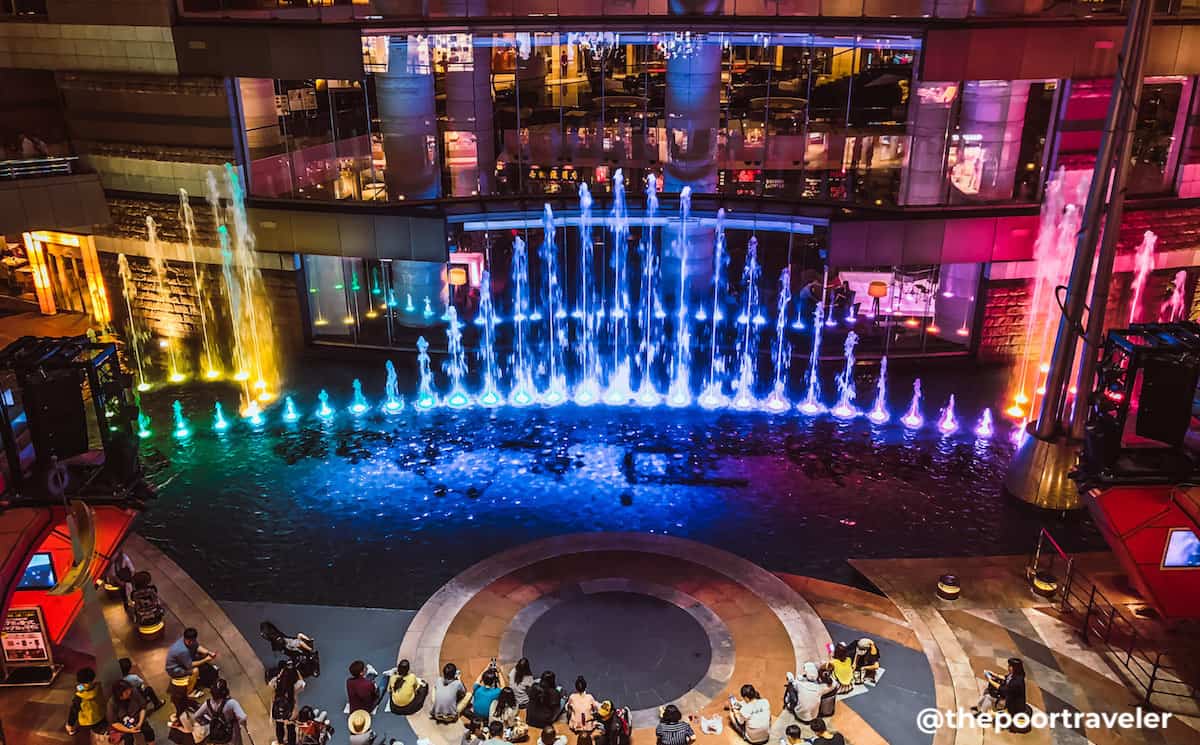

One factor we haven’t set foot on but however is on our to-visit listing is The Retailers Kitakyushu, an open-air advanced that includes prime manufacturers at discounted costs.
And in the event you didn’t have time for procuring, you possibly can perhaps nonetheless do it on the newly renovated Fukuoka Airport’s Obligation Free outlets. It has been expanded to about 4 instances its earlier measurement, reaching roughly 6,000 m². There’s a robust concentrate on Japanese manufacturers.
The place to Keep in Fukuoka
Town has two main wards — Hakata and Tenjin. These two are dotted with eating places, procuring institutions, and lodging. A lot of the points of interest are discovered on Hakata aspect, whereas loads of funds motels are situated in Tenjin. Listed below are the highest funds motels/hostels in Fukuoka as rated by vacationers on-line.
🔥🔥🔥 Use AGODATPT for 10% off on choose motels! 🔥🔥🔥
The Poor Traveler readers and followers can now use a particular low cost code to attain 10% low cost, as much as USD 100 (roughly PHP 5700)! To use and avail of the promo code, go to AGODATPT Promo Code.


Seek for extra Fukuoka Resorts!
Updates Log
2025 11 26 – First uploaded
Enhancing and extra writing by: Asta Alvarez
Photographs by: Yosh Dimen, Vins Carlos, and Asta Alvarez






